Echoes of the Living Exclusive Gameplay
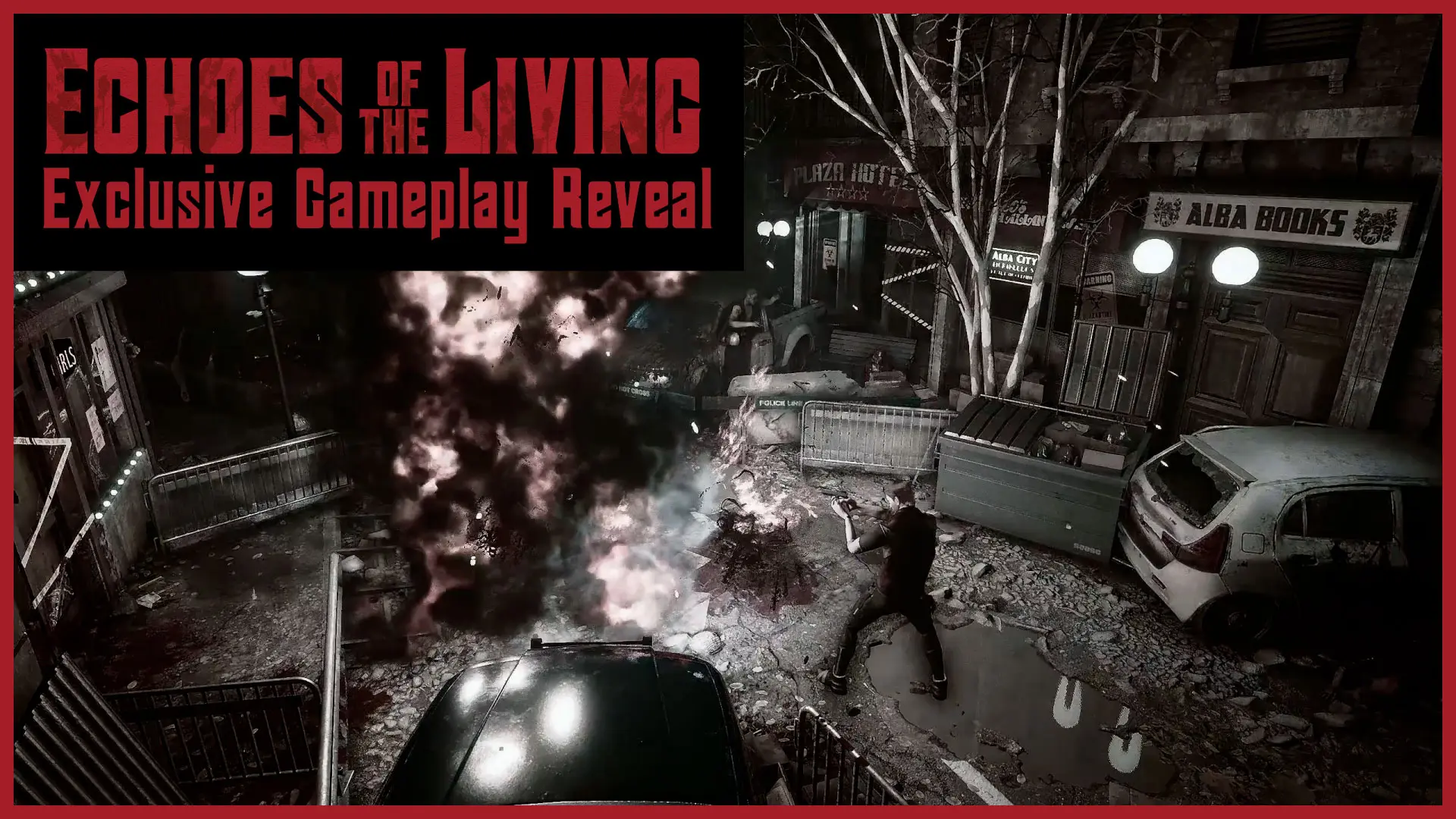
Exclusive First Look at the Upcoming Survival Horror Experience We’re excited to bring you something special today, exclusive gameplay footage of Echoes of the Living shared directly with SurvivalHorrors.com. This upcoming survival horror title is heavily inspired by 90s classics like Resident Evil and Silent Hill, blending fixed camera angles, puzzles, and limited resources with stunning modern 3D visuals. If you’ve been craving a return to the golden age of survival horror, this is a game you’ll want on your radar. Echoes of the Living will be coming soon to Early Access, giving players their first chance to step into its zombie filled world. The Early Access release will feature Liam’s campaign, a 12+ hour survival experience filled with unlockables, multiple paths, and a brutal “Survivor” difficulty. Liam’s story will offer players five unique endings, rewarding replayability. When the game reaches full release, players will also gain access to Laurel’s campaign, which mirrors Liam’s in length, challenge, and content. Both campaigns are designed to provide a complete and deeply engaging survival horror experience, capturing the tension and atmosphere fans of the genre love. The developers (DevMoonGlint & KurauAmami) have also confirmed that future content and expansions will depend on the game’s success in Early Access, meaning fan support will directly influence how this game grows. If the reception is strong, Echoes of the Living could evolve into one of the most content-rich survival horror experiences in years. Don’t miss out on this first look at the horrors to come — watch the exclusive gameplay below and prepare yourself for the return of true survival horror. Echoes of the Living is avalible to wishlist on Steam now: https://store.steampowered.com/app/2173460/Echoes_of_the_Living/
Heartworm: Review
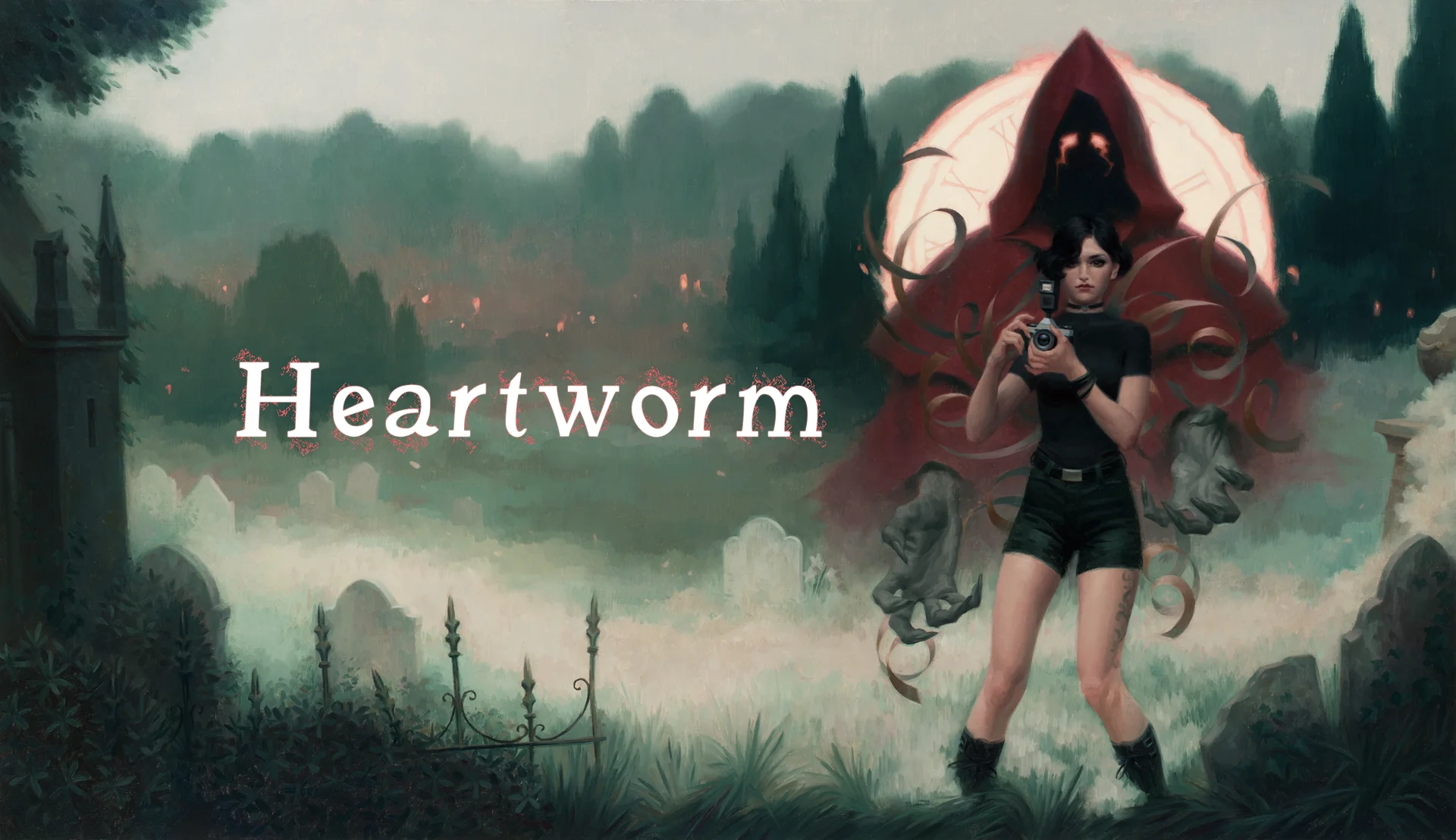
Disclaimer: I received a free review key for Heartworm from the publisher. This does not affect my opinions — all thoughts and impressions in this review are my own. Heartworm isn’t just an indie survival horror game—it’s a deeply personal work, built from the streets, buildings, and small details of Vincent Adinolfi’s own life. It’s rare to see something so steeped in personal history, where every location feels lifted straight from a lived memory. The result is an experience where the environments feel authentic. You’re not wandering through generic level design—you’re navigating spaces that have been lived in, remembered, and reimagined, making Heartworm all the more immersive and rewarding to explore. I was reminded of Hollowbody, which also features a stretch of suburban streets inspired by the developer Nate’s own background in the UK. But the streets there feel distant—abandoned, unreachable—partly because you can only pass by the houses, never step inside. Compared to Heartworm’s intimate spaces, it’s a colder kind of personal. Another source of Heartworm’s warmth comes from its protagonist, Sam, voiced by M in their very first voice acting role. The game is filled with monologues that breathe life into Sam, offering not just exposition but a direct line into her thoughts and emotions. They’re both well written and beautifully delivered—authentic, intimate, and free from the kind of cheesy dialogue that made Resident Evil 1 so charmingly clunky. Gameplay & Variety At the start of the game, you’re given a welcome set of options: graphics can be retro (pixelated) or modern; movement can be tank-style (player-relative) or modern; and aiming can be tank-style (camera-relative) or modern (over-the-shoulder). It’s a smart touch that caters to a wide range of players, as tank controls can be quite divisive. When I played the demo, I opted for tank movement with modern aiming, but found the switch from fixed camera angles to an over-the-shoulder view a little disorientating—it took me some time to get my bearings. For the full game, I switched to both tank movement and tank aiming, and I’m glad I did: it made the combat feel far closer to classic Resident Evil games. Environments Survival horror locations are traditionally dark, grimy, and designed to make you feel uneasy. But Heartworm took one look at that and said, ‘Nah, we’re going to be beautiful.’ I don’t think I’ve ever played a more beautiful horror game — some of the environments are so gorgeous, I actually forgot I was playing a horror game. Before it’s release, I interviewed Michael Jentsch about the enviroments in Heartworm. I learned a lot about how the game was made, but Michael stayed very quiet about some of its best areas — and I’m glad he did. I was genuinely impressed by the scale and variety of the locations. During my playthrough, I explored an abandoned house, a quiet neighborhood, foggy small-town streets, a warehouse, wilderness, a clock tower, a school, a hospital, a subway station, and an office building — and that’s just to name a few. With so many locations to explore, it’s no surprise that Heartworm’s development took around five years to complete and required a small team of dedicated developers. Speaking of which, shout out to the small but passionate indie team behind the game: Vincent Adinolfi, Michael Jentsch, Carlos Lizarraga, Leonardo Esteban Montes, Michael “Goba” Tomczak, Jakub Graczyk, Yves Searle, M. Hart, and Suzi Hunter. Enemies & Combat Feedback for Heartworm is generally very positive, but one area where I’ve seen some criticism is the combat and difficulty. Like Hollowbody, most enemies can be easily avoided. However, this didn’t surprise me, as both Hollowbody and Heartworm are influenced by Silent Hill 2, — a game where enemies are easy to avoid and combat is not the focus. Earlier this year, I also reviewed Post Trauma, another Silent Hill 2-inspired game, and it actually has far less combat than Heartworm. In fact, I thought the variety and number of enemies in Heartworm was very good. There are the bright, TV-like glowing copies of Sam that use a slow-motion attack, the dogs in the Wilderness, the stone statues that come to life with unique stone attacks, mannequin-style enemies, and licker-type creatures that leap from the ceiling. For an indie game, I was impressed by the enemy variety. There are plans to include an increased difficulty mode, but that’s not something I’m particularly interested in when playing a survival horror game. If I wanted really challenging combat mechanics, I’d play a Souls-like game (and I do quite often!). By the end of my playthrough, I had nine health packs and over 100 camera shots — but I think this is because Heartworm went for the Silent Hill-style approach, with enemies that are easier to avoid. In Resident Evil games, you’re often in narrow corridors, so avoiding enemies isn’t always a practical option. Heartworm, on the other hand, takes place in big, open areas and is mostly set outdoors. I didn’t fight any enemies I didn’t have to, which meant I ended up hoarding resources. Wow, what a mansion! When I first found out about Heartworm, I made the same mistake a lot of people did — assuming the gameplay and influences would be similar to Fatal Frame. Having now played the full game, I can safely say the gameplay is nothing like Fatal Frame, especially when you’re using tank controls and tank aiming, as I mentioned earlier. I think when you see a camera being used in a horror game, it’s hard not to make the Fatal Frame connection. However, in Heartworm, the camera feels more like a pistol in Resident Evil. It’s far more accurate to say that Heartworm is influenced by Resident Evil and Silent Hill. The Resident Evil 1 influence is hard to miss — the Clocktower section toward the end of the game feels like stepping right into the Spencer Mansion, complete with a replica of one of its staircases and hallways. I love seeing references and Easter
Survival Horror: How Much Action Is Too Much?
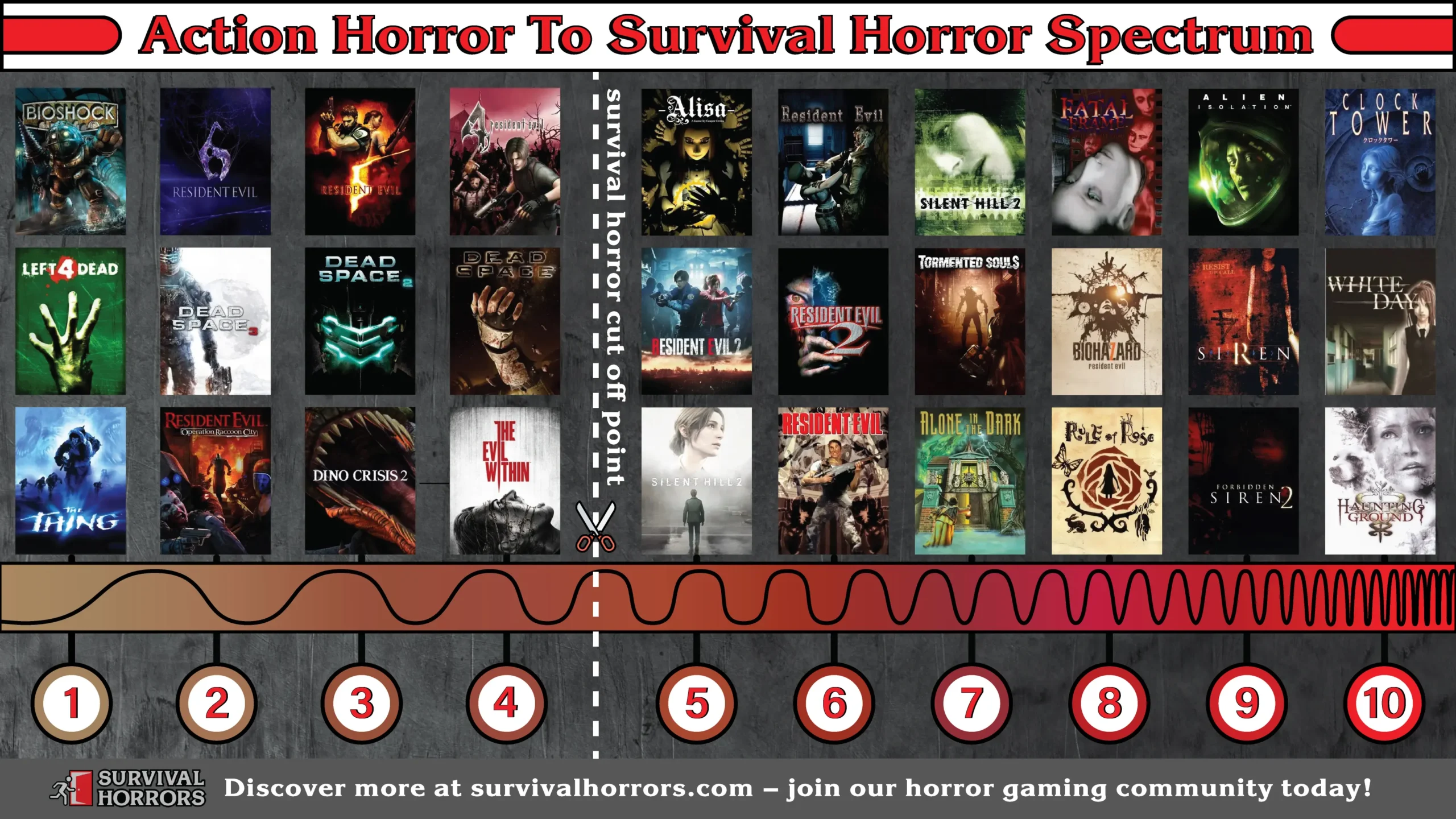
How much action is too much in a survival horror game? That’s the question I hope to explore with my Survival Horror Spectrum, a visual guide that maps where different games fall along a scale from pure action to pure survival. At one end of the spectrum (position 1), you’ll find action-heavy games with little or no survival horror elements. As you move up the scale, the action decreases and survival becomes the focus often with limited combat or no combat at all. While most of us can agree on the core characteristics of survival horror, we each have our own personal threshold. At some point, too much action erodes the tension, resource scarcity, and vulnerability that define the genre. When that balance tips, the game doesn’t just lose its survival horror identity it transforms into something else entirely: action horror. There are many factors that contribute to a game’s classification as survival horror, which can make the genre difficult to define. But too much action is often the clearest and most measurable disqualifier. At some point, when combat dominates every moment and tension gives way to constant gunplay, the game crosses a line. This isn’t a matter of personal taste or opinion; it’s a structural shift in both design and gameplay mechanics. If tension, and vulnerability are no longer central to the experience, then the game no longer fits the survival horror genre. True survival horror relies on elements like resource scarcity, player vulnerability, and the meaningful option to avoid enemies. In some horror games such as Resident Evil 4, Dead Space, and The Evil Within enemies frequently drop ammo, health, and other resources. This not only reduces scarcity but also actively encourages players to engage in every fight, removing any real incentive to avoid combat. Take Resident Evil 2 Remake, for example. Zombies are tough to kill, but relatively easy to avoid. Choosing to avoid them conserves ammo and reinforces the survival tone, even though combat is still present. If, however, those zombies dropped health and ammunition upon defeat, the game would shift to position 4 on my spectrum below the survival horror cut-off point pushing it into the realm of action horror. So, the main question becomes: Where is the line? Let’s start at the bottom of the spectrum with BioShock and Left 4 Dead two of my favorite games of all time. First, let me make one thing clear: placement on the spectrum has nothing to do with quality. The games are ranked purely based on survival horror elements, not how good they are. While it’s true that in both games you’re technically fighting for your survival, the same could be said of almost any shooter. There has to be something more that sets survival horror apart from other genres something beyond simply surviving. The main reason Left 4 Dead sits at the bottom of the spectrum is because of its relentless, unbroken combat. The zombie hordes are so frequent that there’s barely a moment when your finger isn’t holding down the trigger. As mentioned earlier, survival horror does include action, but it’s all about balance. Take Resident Evil 1 Remake (2002) its gameplay alternates between exploration, puzzle-solving, and sudden, tense combat encounters. The action isn’t constant or overwhelming it comes in bursts, often catching you off guard. That’s in stark contrast to Dead Space 3 (2013). Side by side, I don’t think you could find two games more polar opposite in terms of gameplay and how you interact with enemies. As you can see in the footage below, there are moments in Resident Evil 1 Remake where you might encounter just a single zombie. In those situations, it’s often smarter to avoid the enemy and conserve your ammunition for tougher sections or boss fights. That kind of critical decision-making simply isn’t necessary in Dead Space 3, where you can mindlessly gun down every enemy in your path and there are plenty to deal with. It’s not uncommon for the game to throw over 30 enemies at you in a single encounter, and avoidance isn’t even an option. They must be killed to progress, and they also drop health and ammo, giving you no incentive to avoid them. The meme below reads, “They’re the same genre,” which should obviously be taken as satire. Even based on these five-second side-by-side clips, it’s clear that these two games do not play the same way and shouldn’t be classified under the same genre label. Survival horror cut off point After the success of Resident Evil 4 (2005), there was a noticeable decline in traditional survival horror games and a sharp rise in action horror titles. Following its release, the Resident Evil series leaned further and further into action, which is why Resident Evil 5 and 6 fall lower down the spectrum. It’s undeniable that the shift toward action horror became most apparent with Resident Evil 4—but what many people (including Wikipedia) don’t seem to agree on is whether Resident Evil 4 itself should be considered action horror. To be honest, I’d need to write a separate article to fully explain why I believe it is. There isn’t a single element that defines Resident Evil 4 as action horror, but rather a combination of factors that stack up over time. It’s the classic “straw that broke the camel’s back” scenario we just have to decide how much straw (or in this case, how many action elements) it takes to tip the balance. Resident Evil 4 Remake does include more survival horror elements than the original such as stealth, enemy evasion, and Crimson Head–style enemies. In the remake, some enemies can transform if not dealt with quickly, much like the Crimson Heads in Resident Evil 1. In general, enemies also feel more robust and less predictable, much like the zombies in the Resident Evil 2 Remake. In the original Resident Evil 4, if you shot an enemy in the knee, they would almost always fall, allowing you to follow up
Exclusive: Heartworm’s Michael Jentsch on Making PS1-Style Horror
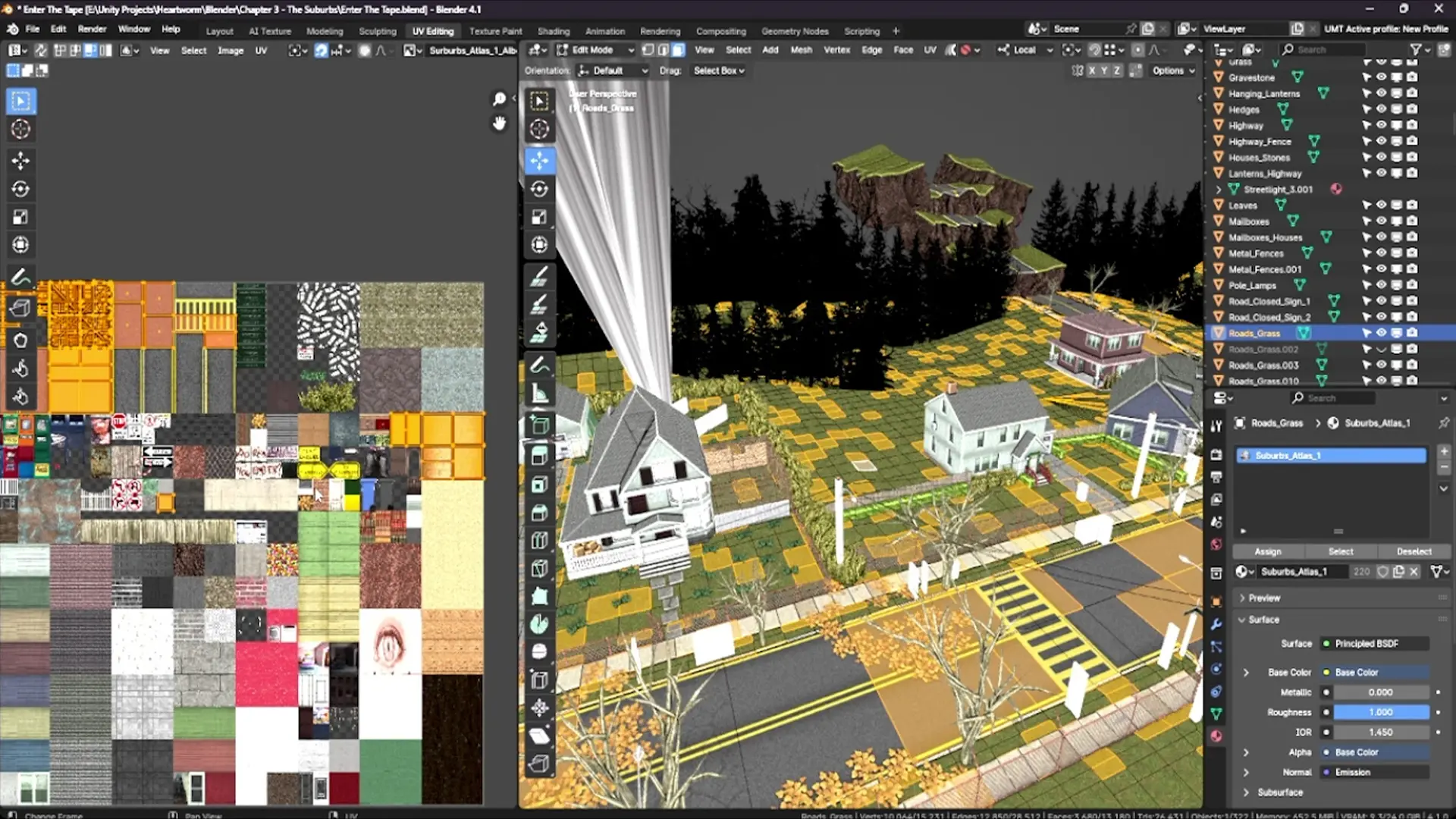
Ever wondered how to create a PS1-style horror game? Then this interview is for you. Michael Jentsch, an environment artist working on the upcoming indie horror title Heartworm, was kind enough to give us a behind-the-scenes look at his creative process, including how he builds lo-fi environments that capture the essence of classic survival horror.
Survival Horror vs Action Horror
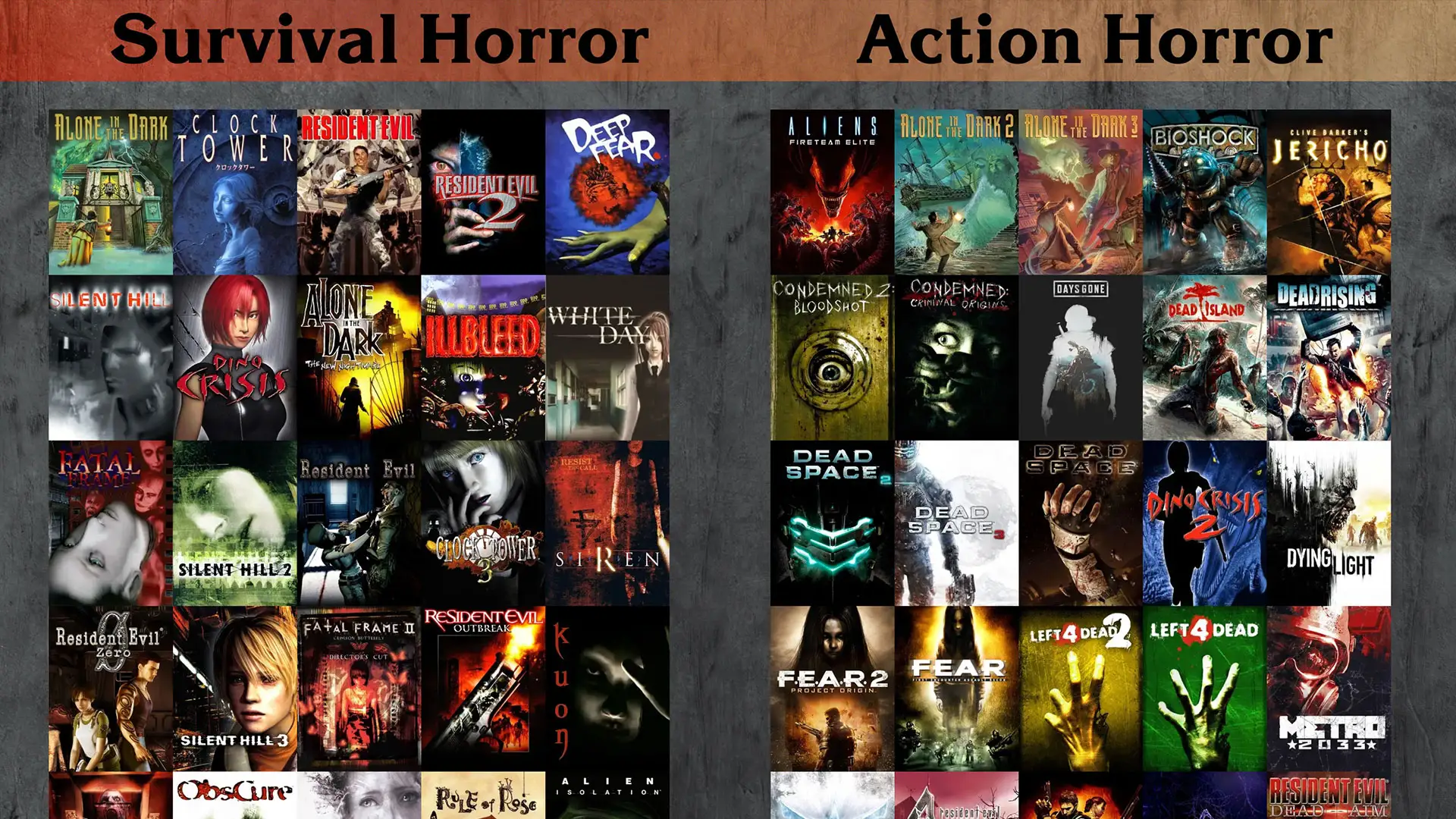
Over the past year and a half, I’ve been cataloguing every survival horror game I can find, with the goal of creating the most comprehensive list of survival horror titles to date. During my research…
Departure of Darkness – Interview
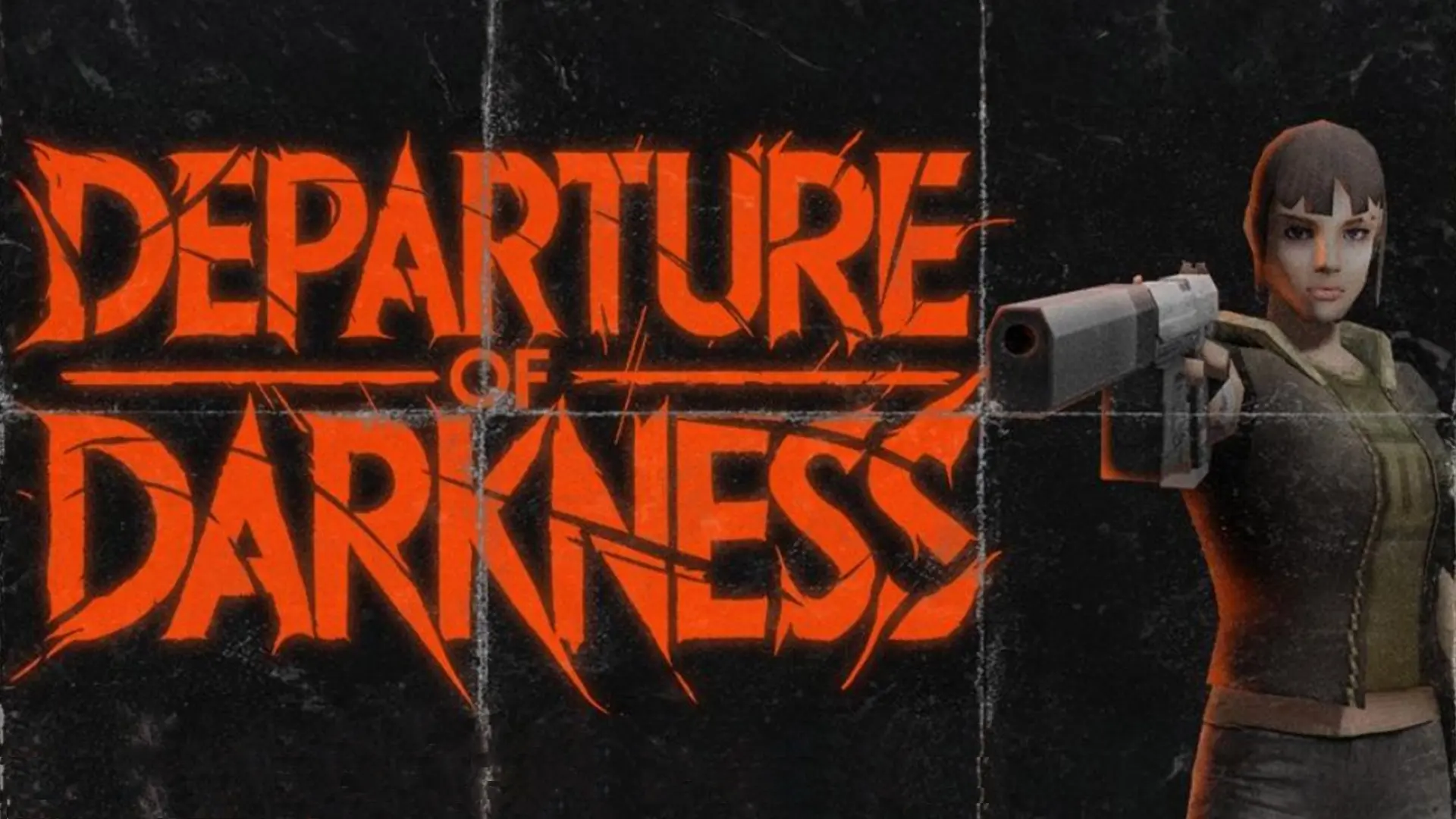
With Departure of Darkness, Red Vault Interactive aims to resurrect the magic of classic survival horror, think the fixed-camera tension of Resident Evil 2 in a new setting: a labyrinthine airport in 2005. I caught up with the developers to talk about their biggest inspirations, how they designed the game’s branching puzzles, and why your every action could turn desperate survivors into your worst nightmare. Q: Departure of Darkness clearly draws inspiration from classic Resident Evil. What specific elements of RE2 did you want to emulate, and where did you deliberately diverge? Our team has a deep connection to the look and feel of the classic Resident Evil games, and we wanted to honor that. We especially loved the pre-rendered backgrounds from Resident Evil 2 , fixed camera angles, and its tight survival horror gameplay loop. The police station setting and its narrative pacing really resonated with us, so capturing that same sense of dread and exploration was a core goal. However, we knew we wanted to push combat further. With modern technology, we can implement precise body-hit detection, so damage depends on where enemies are struck, and a laser sight for more skill-based shooting. On top of that, our narrative introduces various NPCs whose survival depends on the player’s actions, adding weight to every decision. Q: Why did you choose an airport in 2005 as the setting? What about that location and time period made it compelling for horror? Airports are strangely underused in horror games, despite being familiar spaces for so many people. We liked the idea of taking a place everyone knows, check-in counters, security lines, duty-free shops, and twisting it into something deeply unsettling when things go wrong. We chose 2005 because it’s a fascinating time: it was a period when airport security became much tighter worldwide. It also lets us play with technology that feels nostalgic and more analog than today’s always-connected devices. There’s something eerie about an era just before smartphones took over. Q: How do the branching puzzles work, and can you share an example of how player decisions might lead to different outcomes? A core design pillar for us is player agency. Many puzzles have multiple solutions, or can even be skipped entirely if the player prefers to tackle challenges differently. For example, if you don’t want to solve a particular puzzle, you might need to venture deeper into the airport to find an alternate, riskier route. Sometimes that path might expose you to tougher enemies or hidden story bits. We want players to feel clever for how they choose to progress. Q: I noticed in the demo there is a map on the wall, in the final game would you consider letting the player take the map with them? Absolutely. We’ve heard that feedback loud and clear! We’re exploring whether to let players collect and keep maps, or at the very least ensure they’re distributed well enough so players aren’t too lost. Exploration is key for us, and maps are part of rewarding that curiosity. Q: What are some “modern mechanics” you’ve introduced, and how do they complement the retro design? One example is our light RPG system: players can find passport stamps that upgrade Emma’s abilities, tying progression to exploration in a way that fits the airport theme. Our zombies are infected with a parasite that reacts to noise, so players need to manage sound carefully. Finding silencers or opting for melee weapons becomes critical for survival.We’ve also made movement, aiming, and camera transitions more fluid than old-school titles, while keeping the tense, deliberate pace fans expect. Q: What have you learned from being part of Science Park Skövde and CDG-Booster? How have those programs influenced your development approach? These programs have been invaluable. They’ve connected us with mentors, other developers, and business coaches who’ve helped us navigate everything from funding to marketing. The networking opportunities alone have been worth it, we’ve met so many people who genuinely want to see us succeed. Q: How involved is the survivor-rescue mechanic? Will those characters affect gameplay meaningfully, or are they more narrative-driven? They’re very much part of the gameplay. Survivors can help solve puzzles and grant access to areas. But if the player fails to protect them, they’ll mutate into tougher, more aggressive enemies. Your choices have direct consequences, so be kind to the survivors. Q: Is replayability a core goal? If so, how do branching puzzles and survivor outcomes feed into that? Absolutely. Replayability is essential for a great survival horror experience. We’re including all the staples, clear times, grades, alternate endings based on who survives, and so on. But we’re also working on a Resident Evil 3 style “Mercenary Mode”, random item placements, and higher difficulties designed for players who want a real challenge. We want each run to feel fresh and test your mastery of the game. Q: You’re aiming for a mid-2026 release. What does your roadmap look like between now and then? Our focus is on expanding every aspect of the game, more areas, more enemies, more puzzles, adding boss fights. We’re also continuing to polish our core mechanics and narrative systems based on feedback. Expect consistent progress updates as we refine and expand the experience on social media. Q: What kind of feedback have you received on the demo so far, and how has it shaped your roadmap? Are you planning future demos or playtests to involve the community? The response has been amazing, we’ve loved seeing players pick up on the Resident Evil references and embrace the retro look. People have also given us tons of useful feedback on what they like and their main problems. We’re working hard to improve on the experience and really nail the classical feeling whilst minimizing frustration. We’re planning to host regular playtests through our Discord, especially as new areas come online. If you haven’t joined yet, hop in and try the demo on itch.io, we’d love your feedback. If you’re intrigued by what you’ve seen so
Niraya of ■■: Helpless Horror
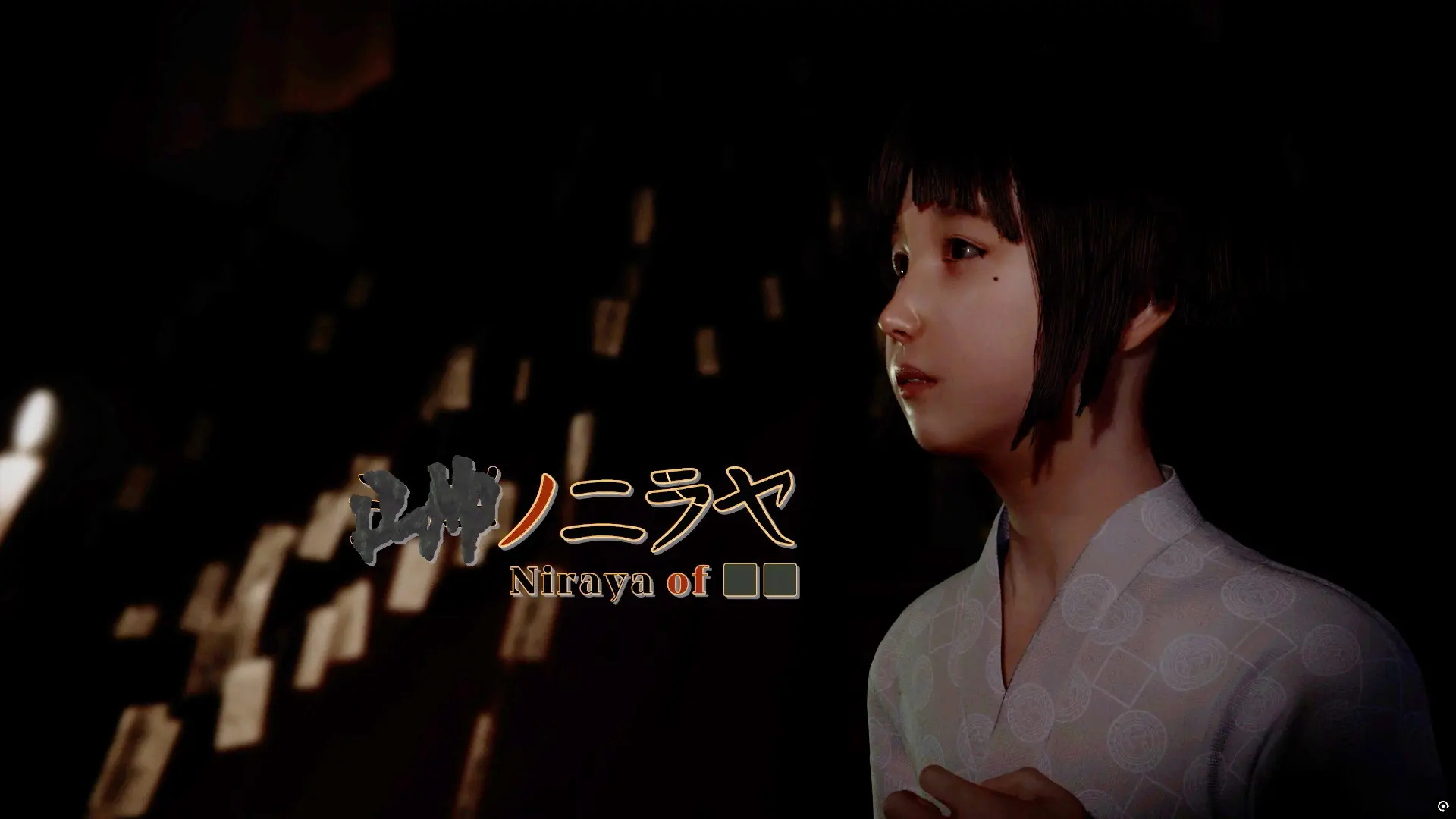
You cannot fight. Yet, you must confront your fears. Set to release in late October, Niraya of ■■ is a Japanese horror game with Buddhist aesthetics. Developed primarily by Yuya Yamaguchi, whose past work includes Silent Hill: The Short Message, MGS Snake Eater 3D, and Final Fantasy Type-0 HD. Although largely developed by Yuya Yamaguchi, the game is supported by a team providing art, music, localization, QA, and marketing. His impressive resume includes collaborations on major Japanese titles. Not Classic Survival Horror Niraya of ■■ is not classic survival horror, instead it is what I would class as “Helpless Horror” or “run and hide survival horror” it diverges sharply from titles like Resident Evil. There’s no combat, Instead it takes inspiration from games like Clock Tower and Haunting Ground, where avoidance, timing, and vulnerability are at the core of survival. The game’s tagline, “You cannot fight. Yet, you must confront your fears,” captures its spirit perfectly. You play as Yuni, a defenseless child abandoned in a haunted world. Powerless to fight back, she must learn enemy patterns, manage her stamina, and rely on premonitions to avoid capture. It’s a minimalist experience that builds tension not through firepower, but through sheer helplessness. Inspirations Behind Niraya of ■■ While Western horror often leans on gore or ruined worlds, Niraya of ■■ draws from more cerebral and cultural roots. “Kuon was a big influence,” says Yamaguchi, referring to FromSoftware’s 2004 cult classic set in Heian-era Japan. The game invites players to experience fear from the viewpoint of an ineffectual child—a motif that places it closer to psychological horror, but with the survival mechanics to back it up. The Premonition and Stamina Systems Niraya of ■■ builds tension not through fast-paced action or violence, but through strategic evasion and resource management. Central to this is a dual mechanic: the premonition system and a strict stamina gauge that governs your ability to flee. Before a threat strikes, Yuni receives a premonition—a moment of foresight that reveals the enemy’s next move. This warning gives you a brief window to react, but reacting blindly can be just as dangerous. Every step Yuni takes depletes her stamina, and once exhausted, she’s left completely vulnerable. Enemies don’t simply chase you—they follow patterns. Survival means observation: learning how enemies move, memorizing escape routes, and finding the right timing to rest, hide, or run. Panic leads to mistakes. Calculated movement leads to survival. “The stamina limit is quite strict,” says Yamaguchi, “but it doubles the sense of accomplishment.” The result is a slow-burning horror experience where every encounter feels tense, every escape earned. You’re not solving combat puzzles—you’re surviving them by outthinking the threat. Coming This Halloween At 70% completion, the game is slated for a late October 2025 release, just in time for Halloween. Yamaguchi promises: “It’s a bit eccentric, but just the right game for horror fans—especially those who prefer unknown experiences.” My final question for Yamaguchi was about the cryptic symbols ■■ in the game’s title: “You can find out the meaning behind the ■■ after watching the whole story of the game!” If you’re intrigued by what you’ve seen so far, be sure to wishlist Niraya of ■■ on Steam to stay updated on its release. You can also follow Niraya of ■■ on Twitter/X for development updates, behind-the-scenes content, and more.
Tormented Souls 2 Demo Now Live
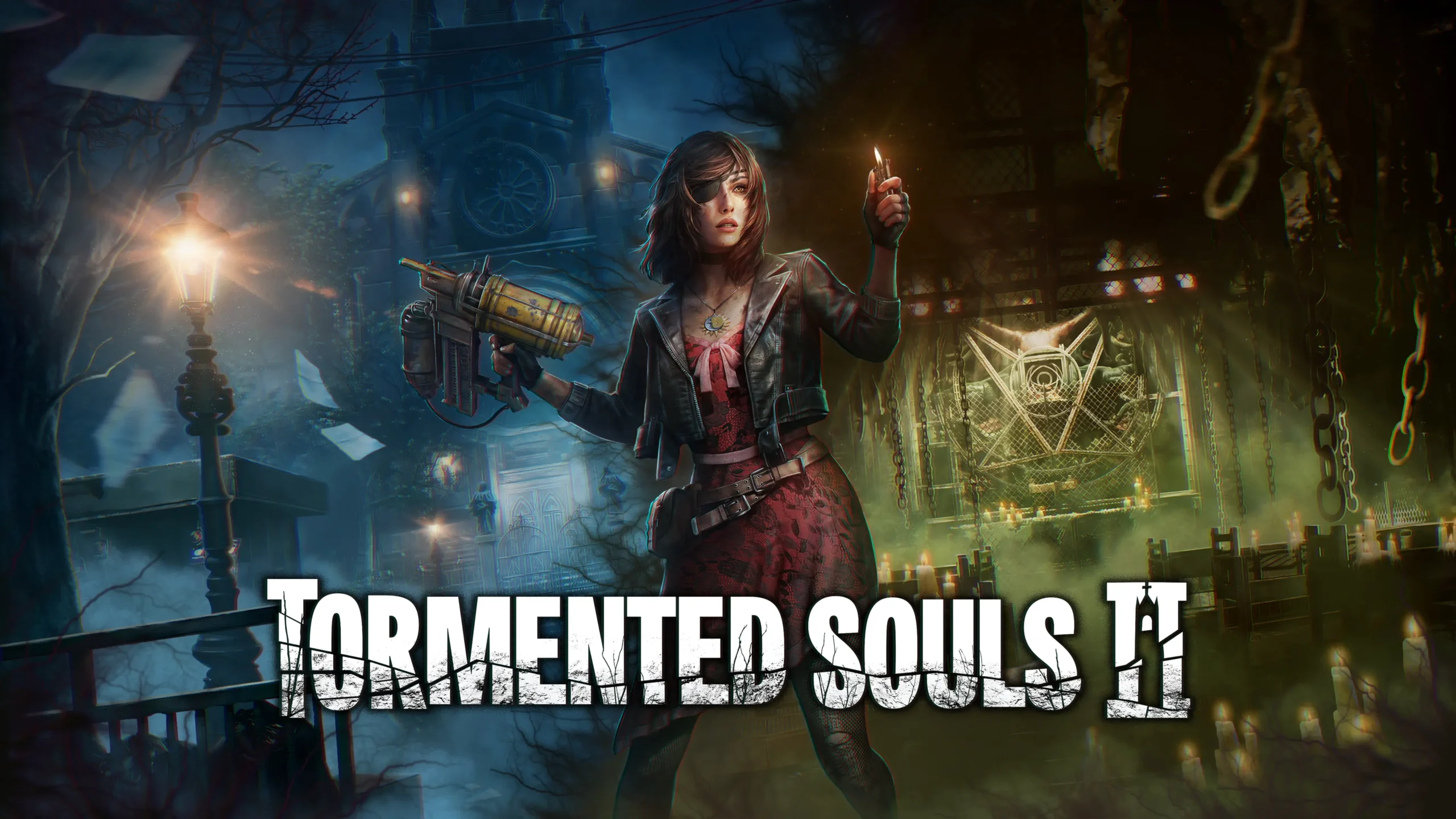
New Look, New Nightmare, and a Return to Classic Survival Horror Roots Grab your nailer and lighter: survival horror fans can now step back into the shadows as Tormented Souls 2 unleashes its brand-new Steam demo, a new story teaser trailer, and a revamped look for returning protagonist Caroline Walker. Tormented Souls 2 promises to improve on the original in every way, offering a longer campaign, upgraded visuals via Unreal Engine 5, and a fresh take on classic survival horror gameplay that fans of the genre will immediately recognise. Play the Demo Now The newly released Steam demo offers players their first hands-on with the sequel, featuring roughly 60 minutes of gameplay that sets the stage for the full story. Caroline and her sister Anna journey to Villa Hess, a secluded town in the Chilean mountains, hoping to find answers to Anna’s increasingly disturbing visions. But peace is short-lived, and players are soon thrust into a fresh nightmare involving shadowy convents, hidden passageways, and a sinister sisterhood with ties to the past. Play the demo here Caroline Walker Returns with a New Look In a nod to the series’ retro influences, Caroline’s design in Tormented Souls 2 has been reimagined to blend nostalgia with maturity. Dual Effect, the developers, describe the new look as a natural evolution, drawing inspiration from survival horror icons like Claire Redfield and Aya Brea. Caroline’s blood-red dress, worn leather jacket, and signature floral motifs combine to reflect her new role: no longer a lone survivor, but a protective sister and fierce fighter. “We wanted to ensure she still felt familiar to returning players, while showing that she’s grown from her past trauma,” said the team. “This is very much her BIG SISTER era.” Watch the ‘Sisterhood’ Story Teaser Trailer Set roughly six months after the original game, Tormented Souls 2 plunges players into a terrifying new narrative. After arriving at a clinic recommended by Caroline’s psychiatrist, Isabella, things take a dark turn when Anna is abducted. Caroline awakens in the convent infirmary and must now navigate a labyrinth of fear to save her sister and uncover the twisted legacy of their family’s past. What’s New in Tormented Souls 2 Tormented Souls 2 will launch later in 2025 on Steam, PlayStation 5, Xbox Series X|S, Epic Games Store, and GOG.com. A PlayStation 5 physical edition is also available for pre-order. Watch the Demo in Action Curious to see how Tormented Souls 2 plays firsthand? I’ve started a full playthrough of the Steam demo, exploring the eerie halls of Villa Hess, solving puzzles, and backtracking for an optional shotgun. Check it out to see the new mechanics, Caroline’s updated look, and some of the game’s early moments in action.
Vampire Huntress – Lament of the Sun – Interview

Vampire Huntress – Lament of the Sun just dropped a brand-new trailer, and with a demo in the works, we thought it was the perfect time to catch up with the developer to see what he’s been cooking up. After all, it’s not every day you see a survival horror game where the monsters are vampires—especially one that draws inspiration from classics like Resident Evil and Koudelka. In this interview, Borealis shares his journey into game development, the influences behind Vampire Huntress, and what players can expect when they step into this blood-soaked world. Q: To start things off, could you introduce yourself and share a bit about your background in game development? (no need to use your real name) I’m Borealis. I’ve been working with games for most of my life. When I was a kid, I got Final Fantasy 8 randomly as a Christmas present, not knowing what that game was or what genre it even was, it changed my world completely, and I have wanted to make games ever since. I started with making levels for Tenchu 2 on the PS1, later moving on to RPG Maker, making my first full game when I was 17. Later I studied programming and 3D art and ended up working as a 3D artist and level designer for several companies, even winning some awards while doing so. I’ve been wanting to work as an indie developer for many years now, but haven’t had the chance to really dive into it until now. Q: Not many survival horror games focus on vampires — the only ones that come to mind are Vampire Hunter D and Countdown Vampires. What influenced you to focus on vampires? I’ve been wanting to make a vampire themed game for a long time. I did my first designs for such a project in 2016, and it was a side-scrolling metroidvania style game, but it never got past prototype phases. I was busy with other things at the time and couldn’t really commit to it. But that idea of a vampire hunting vampires game has been in the back of my mind since, waiting for its time to rise once more. And that time is now. Q: Vampire Huntress is inspired by the original Resident Evil and Koudelka. The Resident Evil influence is clear, but how did Koudelka shape your vision for the game? So yes, originally the idea for Vampire Huntress was “What if Resident Evil 1 had vampires in it?”, but I like to have multiple influences that then help to find that ‘original angle’. The game was originally more influenced by Koudelka, with RPG elements, but I decided to cut those pretty early on as the scope of the game was getting bigger, and I didn’t manage to make the RPG stats and such work well in the framework of a RE1 style gameplay. Ultimately, I think the Koudelka influence can be seen more in the main character (who was heavily influenced by Koudelka’s design herself), as well as the overall tone and mood of the game. Q: Can you talk about the decision to offer both modern and tank controls? So personally, I highly prefer tank controls, as they are really comfortable with fixed camera angles. However, the reality is that there are a lot of people who just don’t like to use them, and I get that. For this reason, I decided to offer both, just like in the Resident Evil 1 remake. Q: Can you avoid combat in VH or will most enemies need to be dealt with? We’re trying to strike a balance where you need to make that choice of whether taking out an enemy is worth the resources, or if you should risk getting past. Of course, dispatching an enemy makes it significantly easier to explore the areas. The enemies in Vampire Huntress are also quite fast, making exploring an area with enemies around that much more difficult. So yes, it is possible to avoid combat, and sometimes it can be the correct choice to make as well, but Luna is a huntress, and the job of a huntress is to hunt! Q: What core survival horror elements do you feel firmly ground VH in the genre, as opposed to more action-heavy horror titles? Open-ended exploration, limited inventory and resource management I think are the strongest pillars between Vampire Huntress and the genre. I want the player to be able to explore a larger area, and complete tasks in a semi-open-ended approach. The game isn’t open world or anything, but it’s not fully linear either. But ultimately you will have to do X to progress further in the game. Ammo is scarce and healing items don’t stack, so it is extremely important for the player to manage their resources efficiently. There is of course a safe box to store all your items, and there are even difficulty options that make the inventory management initially a little easier. Q: There’s been a surge of retro-inspired horror games lately—where do you feel VH distinguishes itself from others in that space? When I started working on Vampire Huntress – Lament of the Sun, I did my research for other indie titles in the genre and there weren’t many at the time. I remember seeing Heartworm, Lake Haven, Alisa, and a few others, but that was about it. The surge started happening shortly after I was already going full steam ahead with Vampire Huntress. However, with Vampire Huntress, I aim to create a full package and an original story. A game that does pay homage to the classics of the genre, but doesn’t dwell on them, and confidently stands on its own two legs. I hope that the final product will feel like a AAA survival horror game that was released 25 years late. Q: Do you have any plans for demo? If yes when can we expect it? The demo is coming! We have been working on the demo for quite
10 Survival Horror Games Coming in 2025
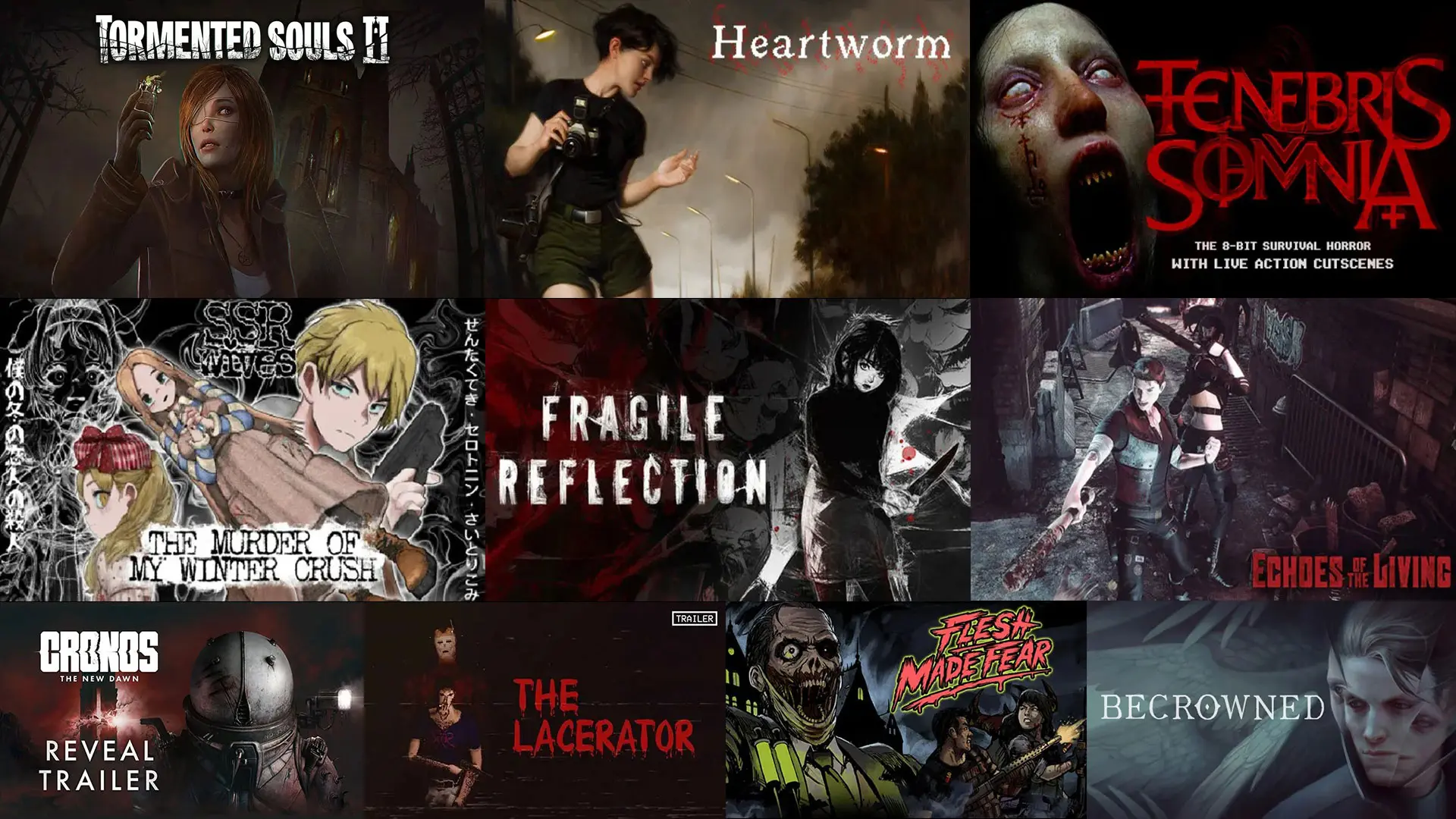
2025 Is Shaping Up to Be a Landmark Year for Survival Horror There’s never been a better time to be a survival horror fan. In recent years, the genre has seen a huge resurgence, but 2025 is taking things to a whole new level. With a staggering number of titles slated for release, it’s clear that survival horror is not only back, but thriving. In this article, I’ve highlighted 10 of the most exciting survival horror games currently scheduled to launch in 2025. These are just the standouts, there are even more on the way. In fact, by the time of writing, five survival horror games have already been released this year. Dead of Darkness, THE MUTE HOUSE, Blood Typers, Mansion of the Dead and Post Trauma. If you want to see the full list of upcoming survival horror games, be sure to visit our upcoming page. You’ll also find Steam links for every game mentioned in this article, so you can wishlist your favorites with ease. 1. Tormented Souls II The orignal Tormented Souls (2021) came closer than any other game to capturing the feel of a modern Resident Evil remake. The main difference being Tormented Souls ditched pre-rendered backgrounds in favor of fully 3D environments, giving the game a modern edge while still honoring classic survival horror roots. Details on the sequel have been sparse, the developer Dual Effect is notoriously tight-lipped, but the publisher PQube did share some teaser information on social media leading up to Christmas 2024. Here are the highlights: If Tormented Souls II is anywhere near as good as the original, it could easily be my survival horror game of the year. But honestly, judging by what we’ve seen so far, it looks like it might be even better. Wishlist Tormented Souls II now on Steam: store.steampowered.com/Tormented_Souls_2 2. Tenebris Somnia 2D survival horror games are few and far between. In fact, some purists would argue that if a game doesn’t check the Resident Evil boxes (3D environments, fixed cameras, tank controls) it doesn’t qualify as true survival horror. I’m not quite that rigid, which is why I’m genuinely excited for Tenebris Somnia. After playing the demo, it felt like a lost NES survival horror gem except, of course, for the addition of live-action cutscenes. Created by Argentine developer Andrés Borghesi in association with Sabot Studios and published by New Blood Interactive, Tenebris Somnia blends classic survival horror gameplay, limited resources, and environmental puzzles, and just enough combat to keep you tense. At key moments, the pixel art gives way to full-motion video scenes featuring real actors, directed by an award-winning film crew. It’s strange, immersive, and unlike anything I’ve seen in the genre.Here are some of the key features: Wishlist Tenebris Somnia now on Steam: store.steampowered.com/Tenebris_Somnia 3. Heartworm Heartworm is shaping up to be a unique blend of Resident Evil and Silent Hill, capturing the best of classic survival horror while carving out its own identity. Like Resident Evil, it features fixed camera angles, retro-style visuals (with optional PS1-inspired filters), exploration-heavy gameplay, and puzzles. But instead of a handgun, your weapon is a camera similar to the mechanics of Fatal Frame. Visually, Heartworm isn’t just another “RE clone.” Its surreal, dreamlike environments stand out immediately, evoking the tone and atmosphere of Alone in the Dark (1992) with a distinctly Lovecraftian flair. I’m especially excited to explore these bizarre locations, which promise to be more than just backdrops, they seem designed to reflect the protagonist’s inner turmoil. Voice acting can be hit or miss in indie games, but from what I’ve heard in the trailer (Video above), Heartworm is delivering something special. Sam, the protagonist, is voiced by M, and their performance already adds emotional depth to the character. If the full game maintains this level of quality, it could be one of the rare indie horror titles that truly connects with players on a psychological and emotional level.You can follow Sam’s voice actor, M, on BlueSky: https://bsky.app/profile/mmmdesu.bsky.socialWishlist Heartworm now on Steam: store.steampowered.com/Heartworm 4. Fragile Reflection Of all the games on this list, Fragile Reflection may be the most obscure and the most intriguing. A new demo just dropped on Steam, and I highly recommend checking it out (and wishlisting it while you’re there). Set in a rural Japanese village warped by supernatural forces, the game follows Kario Ito as she returns home only to find her town swallowed by otherworldly horror, twisted Noh masks, and a haunting realm known as “Reflection.” What really caught my attention first, though, wasn’t the gameplay, it was the music (Trailer above). The soundtrack, composed by underground trip-hop/psy-trip artist Mad Jha, is unlike anything I’ve heard in a horror game. I wasn’t even familiar with the genre, but I’ve had it on loop since discovering the demo. It’s dark, textured, and fits Fragile Reflection’s visuals perfectly. The full soundtrack will be available for purchase when the game launches, and honestly, I’m just as excited to buy the music as the game itself. As for the gameplay, this is very much a throwback to classic late-’90s survival horror: limited resources, dimension-hopping puzzle mechanics, and monsters that lurk in both worlds. You’ll explore a cursed town, piece together clues, and use a mysterious supernatural power to shift between reality and the realm of Reflection.Wishlist Fragile Reflection now on Steam: store.steampowered.com/Fragile_Reflection 5. SSR Wives: The Murder Of My Winter Crush Like Fragile Reflection, I was instantly hooked on SSR Wives: The Murder Of My Winter Crush the moment I saw its trailer and more specifically, heard its trailer music (Video below). I’ve had it on repeat ever since. Mysterious and dreamlike, it perfectly matches the game’s offbeat horror tone. I haven’t been able to identify the track or artist yet, but I’ve been told a demo is on the way soon. When it drops, I plan to interview the developer, one of the first questions I will ask is who created the music and can we expect to hear more! As for the game itself, SSR Wives is shaping up to be a mix of classic survival horror and visual novel storytelling. You’ll explore a mystery narrative that’s packed with player
Post Trauma – Review
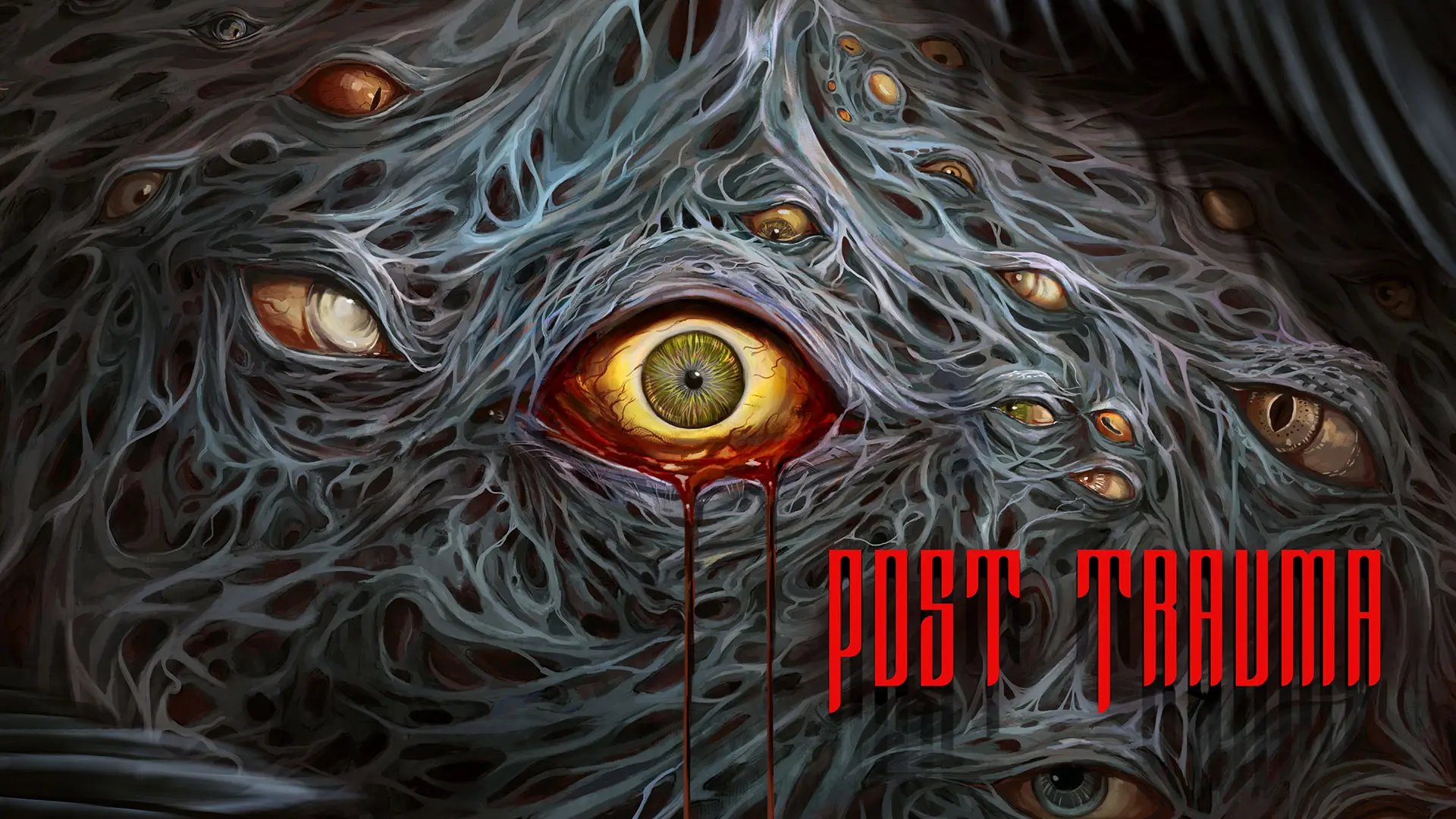
Disclaimer: We were fortunate to gain early access to Post Trauma. The impressions shared in this article are based on that pre-release version. “Not the Next Silent Hill” Post Trauma is a modern indie survival horror game that wears its influences proudly on its sleeve. With fixed camera angles, challenging puzzles, limited combat, and classic save rooms complete with storage chests. It captures the feel of late-’90s horror classics while leveraging the power of Unreal Engine 5 to deliver realistic visuals that heighten the tension and bring its surreal world to life. The game began as a solo development project before gradually expanding to a small team of three to five people at different stages. What this team has accomplished with limited resources is genuinely impressive, much like the spirit of a survival horror game itself. Roberto Serra Gascón, the creator of Post Trauma, posted on Steam, saying, “Some people have seen the trailers and commented, “Post Trauma is the next Silent Hill!”, but let me tell you, it is not… we are aware of the limitations of our game and I hope our players are too.” While this statement helps manage expectations, I think the team is being incredibly modest. The atmosphere in Post Trauma is so well crafted that, at times particularly in some of the environments, it felt on par with, if not better than, the Silent Hill 2 remake. That’s remarkable when you consider the size and resources of the team behind it. While Post Trauma may not match the scale of a modern Silent Hill it shares a similar design philosophy with the recently released Hollowbody, another indie horror title inspired by Silent Hill 2. Both games prioritize atmosphere, puzzles, and psychological tension over combat, staying true to the roots of classic survival horror. That said, Post Trauma offers a longer, more expansive experience, giving its world more time to breathe and unfold. The Environment Is the Clue You start the game locked on a train, and the only way to escape is by solving a puzzle. At first, I thought this was a questionable design choice, but in hindsight, it’s actually the perfect introduction. It immediately sets the tone, Post Trauma is a puzzle focused experience, not a combat heavy one. The best advice I can give going into this game is to pay close attention to your surroundings. Don’t be afraid to use your phone camera to snap photos and take notes of anything that stands out. Clues aren’t spoon-fed to you; they’re often hidden in the environment and conveyed through visual storytelling and imagery, rather than text. That took a bit of adjustment for me, as I’m used to more text heavy clues, which I usually don’t enjoy. So this more visual, interpretive approach was a refreshing change. Surreal Atmosphere The atmosphere in Post Trauma is brilliant — from the moment you step off the train, it’s clear that a huge amount of care went into the environment and set design. One of the game’s greatest strengths is its surreal, dreamlike tone. From haunting enemies and unsettling mannequins to corridors that feel like they’ve slipped out of a fever dream, the world of Post Trauma is deliberately disorienting and deeply immersive. A large part of that comes from the vision of Pau Pujadas, who joined the team as concept artist and art director shortly after the studio partnered with Raw Fury. Pau took the surreal ideas at the heart of the game and dialed them up dramatically, creating bizarre, beautiful concept art that shaped its distinct, otherworldly identity. And it’s not just concept art — Post Trauma‘s 3D models deliver visual moments that rival big-budget AAA titles. Though Pau’s background is in 2D, he quickly adapted to 3D sculpting, crafting many of the game’s most memorable organic designs. Thanks to Unreal Engine 5’s Nanite technology, those surreal sculptures were brought directly into the game world in stunning detail. An Unlikely Protagonist I know I’ve already said this, but it’s worth emphasising, this is not a combat heavy game. If you’re looking for intense action, you’re in the wrong genre. In Post Trauma, not every battle needs to be fought or won, sometimes, running is just as valid as fighting. That’s true of most classic survival horror games, and it holds true here. Not only is combat minimal in Post Trauma, but movement is also deliberately sluggish, and that’s very much a design choice. Without giving too much away, Roman isn’t the only playable character, and one of the others moves with a noticeably smoother, almost gliding motion by comparison. I’m not the first to point this out, but Roman is a refreshingly unconventional survival horror protagonist. He’s just an ordinary man, not a fighter, and if he runs for too long, he gets winded and has to stop to catch his breath. Honestly, I can relate. A vulnerable character is a core element of the genre, and it’s nice to see a break from the usual “young girl” trope. Interestingly, the original concept for Post Trauma did feature a young female lead, but when Epic released their digital human creation tools, the team pivoted to Roman instead. Fixed Camera Angles I think it’s important to highlight just how well-executed the camera work is throughout Post Trauma. Above is a short video showcasing some of my favourite moments. It’s not just about where the camera is placed — it’s about how it’s used to enhance the atmosphere and storytelling. For example, as you exit the train at the start of the game, the camera lingers behind, peering out from inside the carriage. In the claustrophobic hospital archives, it tracks you from behind rows of shelves, adding a layer of unease and tension. It’s not just atmospheric — it’s also a smart and practical choice, making it much easier to navigate the tight, cluttered space without getting disoriented. I’ve played other indie horror games with fixed cameras that feel awkward or limiting, but that’s not the case
Soultracer Interview
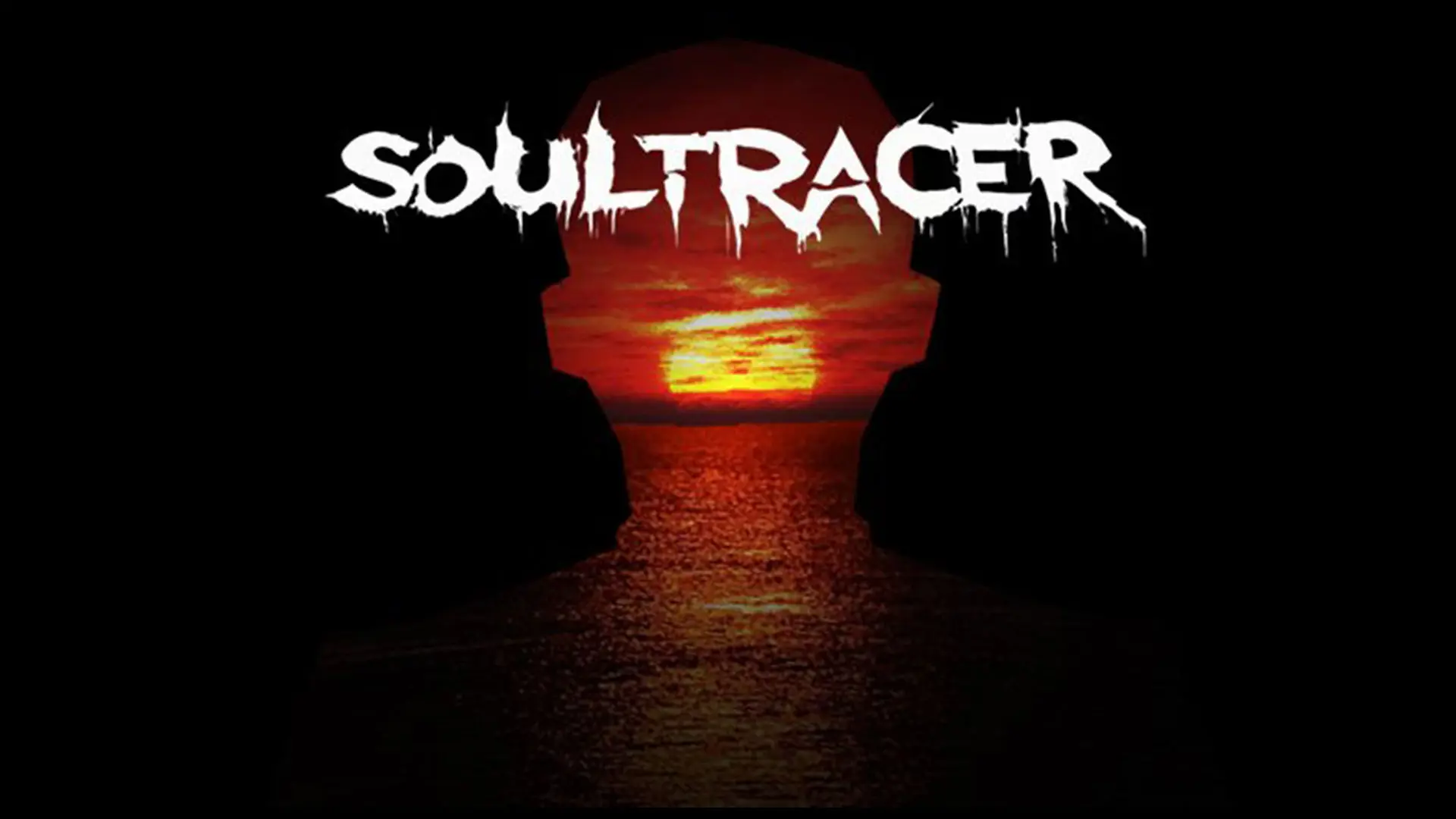
We recently spoke with Alejandro, the indie developer behind Soultracer, an upcoming PS2-style survival horror game with classic roots and modern storytelling. Under the name Silent Archangel Studios, Alejandro is bringing a nostalgic yet fresh perspective to the genre. We asked him about his background, inspirations, the haunting town of Aerie Vista, and what makes Soultracer stand out. Q: Introduce yourself! Who are you and what is your background in game development?Alejandro:I’m Alejandro, a 25-year-old solo developer under the name Silent Archangel Studios, working on Soultracer. I’m based in Peru, where there aren’t many games being developed, especially in the survival horror space. That’s one reason I wanted to make my own. I started with Unity back in 2015, making a simple first-person horror game just for fun. I showed it to my friends at school, loved their reactions, and realized I wanted to keep creating. I returned to Unity in 2020, experimenting with new ideas until, in 2024, I finally felt ready to create the game I had always envisioned. Q: What survival horror games inspired you to create Soultracer?Alejandro:In 2005, I played the original Alone in the Dark on my family’s old computer. It couldn’t run modern games, so those classic ones were perfect. I loved how situations could be solved in creative ways, like avoiding combat by placing soup on a table. That really stayed with me. My older brothers also played Resident Evil on the PS1, which introduced me to survival horror. I later got into Dino Crisis, The New Nightmare, and others.What drew me in were the unpredictable elements and atmospheric tension. Soultracer reflects that. I love classic horror storytelling, where characters unknowingly walk into danger. In this game, it’s about saving the whole group, not just the protagonist. I want players to care about the characters and face genuine risk while navigating a world that always feels threatening. Q: Can you tell us more about Aerie Vista? Is it based on a real place or purely fictional?Alejandro:Aerie Vista is a fictional U.S. town, and unlike many horror game settings, it’s not abandoned. It’s actually beautiful, especially at sunset, with an oceanfront and rich history. In Soultracer, a group of friends finds themselves trapped in another world after discovering a mysterious gateway.The cast includes Rachel (rebellious and charismatic), Johnny (lighthearted and loyal), Ashen (quiet and intelligent), and the protagonist, who the player names. The group originally met online in a video game, and this is their first time meeting in person. There’s also a strange man who helps you early on. Each character affects the story in meaningful ways. Q: The ability to separate your soul from your body is a fascinating mechanic—it reminds me of The Nomad Soul. How does it work in gameplay?Alejandro:At certain moments, the protagonist can separate their soul from their body. When this happens, the camera shifts to first-person, you float above your own body, which is in pain. You can’t stay out too long or you’ll lose health.This mechanic adds a twist to puzzle-solving. As a soul, you can see things your body can’t and interact with objects in different ways. I wanted to expand on traditional horror puzzles by rewarding exploration and experimentation.There’s also a mysterious Bartender. Her bar acts as a hub where you trade collected souls for items and weapons. Backtracking is present but not excessive, more of a reward for explorers than a punishment. Like in Resident Evil, the map shows rooms that still have items, helping players avoid frustration. Q: Your Steam page mentions that things won’t always be the same on different playthroughs—what kind of changes can players expect?Alejandro:At the start, players answer a few short questions, including entering their name. These responses affect small but meaningful things. A cautious player might receive different starting items than a more aggressive one.Enemy placement and some story moments shift based on your answers. Later on, major decisions arise that can significantly change how the story plays out. Some might seem small at first but will have big consequences by the end. I want players to feel that their choices matter, encouraging them to replay and see different outcomes. Q: What do you hope players will take away from Soultracer?Alejandro:I hope they feel like they experienced a classic survival horror game with a modern heart. I want it to be atmospheric, meaningful, and personal—and for players to care about more than just survival. If you’re intrigued by what you’ve seen so far, be sure to wishlist Soultracer on Steam to stay updated on its release. You can also follow Silent Archangel Studios on Twitter/X for development updates, behind-the-scenes content, and more.
Kurai Yama – Upcoming Survival Horror
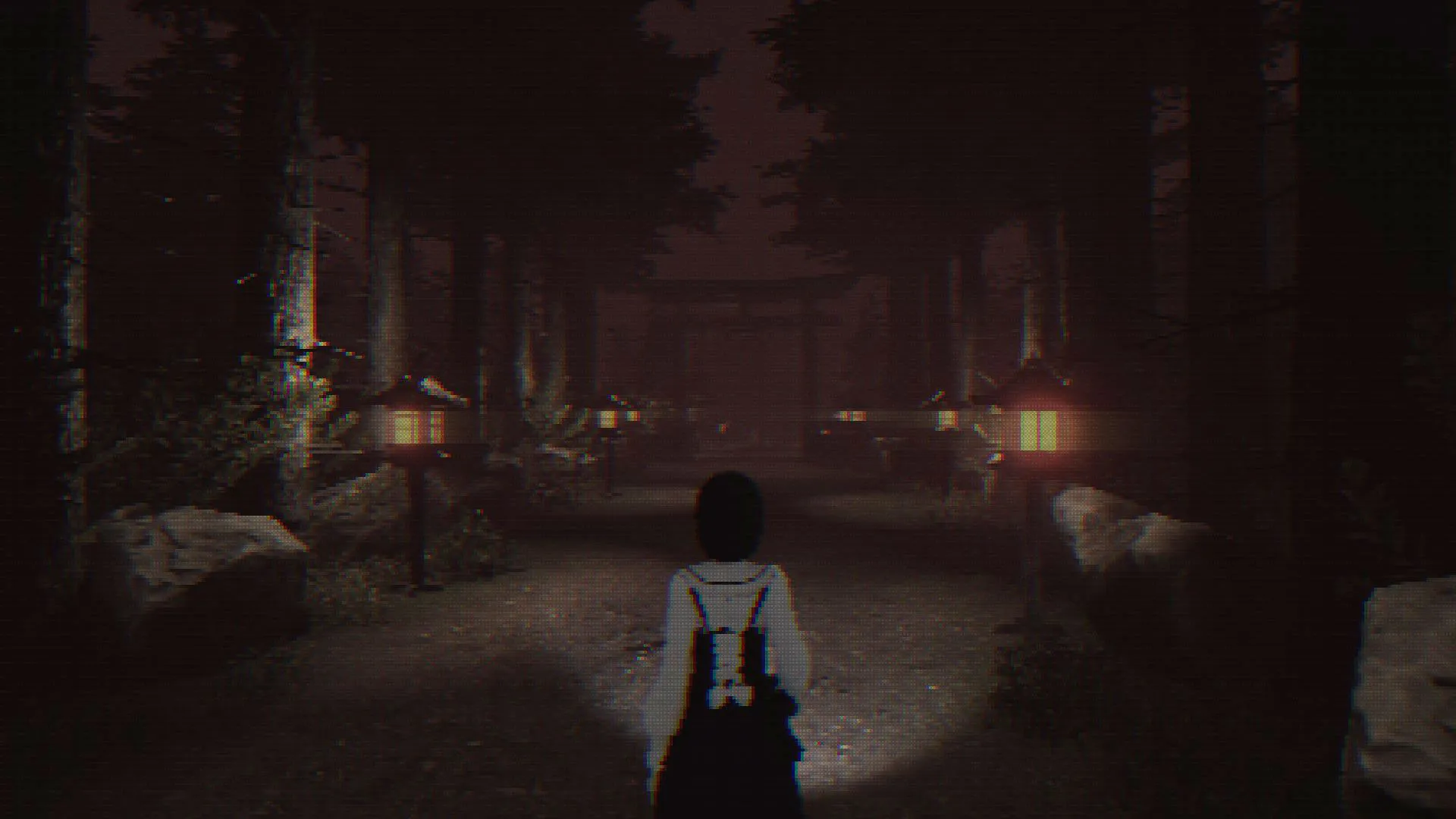
Introduction: Meet the Developer Horror and retro aesthetics go hand in hand, and solo indie developer D4C is bringing them together in Kurai Yama, a survival horror experience inspired by the golden era of the genre. Based in Tunisia, D4C has been experimenting with game design for years, crafting prototypes and refining his skills before finally launching his first official title. Despite being his first full game, Kurai Yama is shaping up to be a carefully crafted homage to the chilling atmosphere of classic survival horror games. Inspired by the Legends of Horror D4C’s love for survival horror started young, with Dreamcast and PS1-era classics shaping his vision. Titles like Resident Evil, Silent Hill, and Fatal Frame left a lasting impression on him, from their atmospheres to their unique control schemes. “That mix of tank controls, fog-drenched dread, and ghostly vibes it’s what lit the spark for my game,” he explains. This nostalgic inspiration is at the heart of Kurai Yama, a game that seeks to recreate the slow-burning tension and unsettling exploration that defined those early horror masterpieces. What Makes Kurai Yama True Survival Horror? Unlike modern horror games that often lean into action elements, Kurai Yama stays purely survival horror in design. It features: With no weapons to rely on, the game emphasizes the feeling of vulnerability, putting players in Saki’s shoes as she navigates the dangers of Hozuki. Story & Setting: A Haunting Mystery Kurai Yama follows Saki, a goth girl from Japan with a fascination for the supernatural. She spends her nights combing through obscure internet forums in search of ghost stories until she stumbles upon a thread about Hozuki, a town shrouded in rumors and disappearances. As she reads through the posts, she comes across something terrifyingly personal: her sister Reiko’s name, listed among the missing. Reiko vanished without a trace five years ago, and no one has been able to uncover what happened to her. Determined to find answers, Saki boards a train to Hozuki, a town steeped in dark secrets. What awaits her is a nightmare she never expected. Final Thoughts Kurai Yama is shaping up to be a true throwback to the survival horror era, bringing back the dread, tension, and vulnerability that made those early titles unforgettable. With classic gameplay mechanics, an engaging mystery, and a deeply atmospheric world, it’s one to keep an eye on for horror fans looking for something genuinely unsettling. Are you ready to step into the unknown and face the horrors of Hozuki?You can follow D4C’s journey on Twitter/X (@MarincessStudio) or check out his work at marincess-studio.com.
Kanpeki: Upcoming Survival Horror

Indie developers Streetlight Studio are taking a fresh yet nostalgic approach with their upcoming game Kanpeki, blending classic survival horror elements with unique mechanics and a striking aesthetic. I reached out to the developers of Kanpeki to ask what they are working on, and they shared their vision, inspirations, and challenges in bringing the game to life. Inspired by Classic Survival Horror When asked about their inspirations, the developers emphasized their love for retro horror games. Kanpeki draws from beloved classics like Haunting Ground, the Fatal Frame series, and the indie horror title World of Horror. The goal? To create a game that feels like a tribute to early 2000s PS2 style survival horror while integrating modern mechanics and storytelling. Beyond video games, the team also pulls inspiration from cult Japanese horror films such as Kami Kaze Girls, Noroi, and Suicide Club. These influences shape the game’s distinct visual style, combining traditional horror aesthetics with a surreal and cinematic approach. Innovative Gameplay Mechanics Kanpeki follows in the footsteps of early Silent Hill and Resident Evil titles in terms of gameplay, but with a twist. The most unique mechanic is the “breathing mechanic,” where the main character, Hoshi, holds her breath to the point of hallucination. This not only adds to the tension but also alters the game environment, revealing hidden threats and unsettling changes. Another standout feature is the “Stickers” system, reminiscent of the charm mechanic from Hollow Knight. This allows players to customize Hoshi’s abilities with a Gyaru-themed twist, reinforcing her personality while also affecting gameplay. A Story Rooted in Social Expectations At its core, Kanpeki tells a deeply personal and socially conscious story. The protagonist, Hoshi, is a Gyaru—a subculture often misunderstood and overlooked in media. The game explores themes of social expectations, identity, and the pressures young women face. Set in a rural Japanese town in the early 2000s, Kanpeki presents a world where people mysteriously disappear, yet no one seems to acknowledge it. Hoshi finds herself drawn into a parallel version of reality, where she must navigate twisted environments and terrifying encounters to escape back to her normal life. Each chapter is designed to explore a different aspect of social expectations, ensuring a thought-provoking experience beyond the scares. The Team Behind the Horror Streetlight Studio is a small but passionate team of indie developers, ranging from two to six members at any given time. Fresh out of video game school, the team hails from various parts of Europe, including France, Portugal, and Germany. Despite having no funding, they have poured their hearts into making Kanpeki a reality, balancing work with their creative vision. For those eager to follow the game’s development, the best place to stay updated is through their Discord, which can be found via their Linktree. Fans can also visit their official site on Neocities. What’s Next for Kanpeki? The team is currently working on a Chapter 0, which will focus on Hoshi’s life before the supernatural events unfold. This introduction, alongside a revamped Chapter 1, will provide players with a more immersive experience and deeper insight into the game’s themes. From there, the future of Kanpeki will depend on the reception and support from fans. For horror enthusiasts looking for something fresh yet familiar, Kanpeki is shaping up to be a standout indie title. With its blend of classic survival horror gameplay, unique mechanics, and a compelling narrative, it’s a project worth keeping an eye on.
The Third Pig – Review

The Third Pig is a proof-of-concept game that falls into what I’d call the “run-and-hide” style of survival horror. Inspired by The Three Little Pigs, you play as the third pig, the last surviving sibling after Mr. Wolf and his mysterious accomplice kill your brothers. Your role is to escape your own home, which has become a trap, using your wits to solve various puzzles. Drawing from the golden age of the genre, The Third Pig embraces fixed camera angles, tank controls, and a Silent Hill inspired inventory system. Its black-and-white aesthetic isn’t just for style, it cleverly makes key interactive objects stand out. It’s a subtle but effective touch that ensures players never miss a crucial item while still demanding keen observation to solve its puzzles. The game strikes a great balance, challenging but fair, never holding your hand, yet rewarding those who pay attention. At first, I thought the wolf-stalker dynamic was inspired by Clock Tower or Haunting Ground, but it turns out that PopsArcade was actually influenced by Tomás Esconjaureguy, the developer behind Cannibal Abduction. That said, this mechanic isn’t quite as fleshed out as in the games I initially mentioned. Escaping from Mr. Wolf is as simple as hiding in an outhouse or the upstairs attic. Strangely, he won’t huff, puff, or blow the outhouse down instead, after a few seconds, he simply loses interest and walks away. In some respects, this makes him feel less like a true threat. However, if he traps you in a corner, escaping becomes nearly impossible, effectively turning it into an instant death scenario that forces you to restart from the beginning. With an estimated playtime of 30-60 minutes, The Third Pig is a short but effective way for the developer to cut their teeth. I really enjoyed the voice acting at the beginning, and there’s even a cameo from eurothug4000, which I wasn’t expecting but absolutely loved. I’d love to hear more of them in a sequel. Now that the groundwork is laid, I’m keen to see what they do next. Keep an eye on them for future updates: @popsarcade.bsky.social If anyone wants a copy of The Third Pig I will personally buy it for you (it’s free): https://store.steampowered.com/app/3316090/The_Third_Pig/
PHASE ZERO: Survival Horror Revival
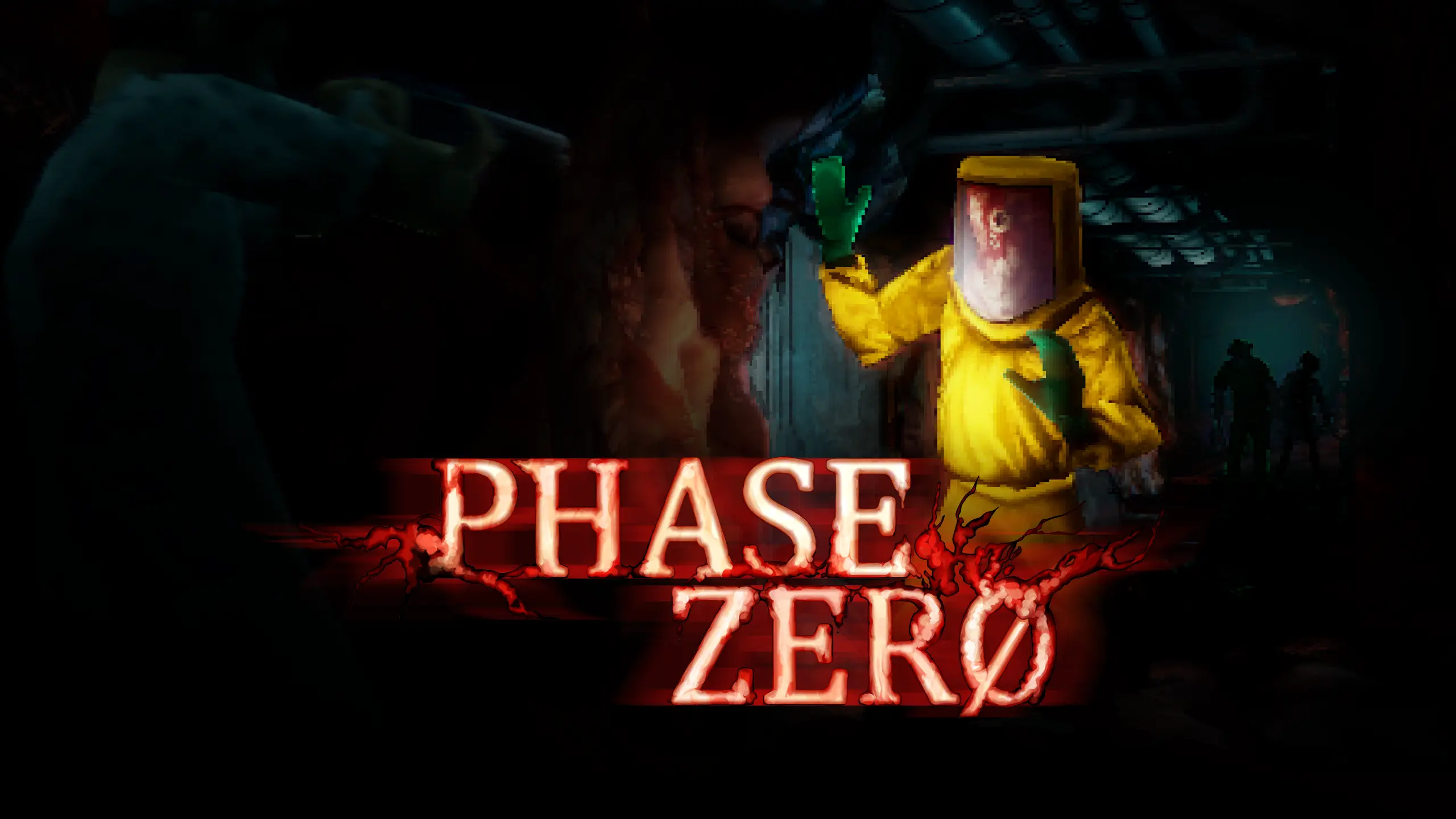
The golden era of survival horror is about to make a return with PHASE ZERO, a brand-new indie title that promises to pay homage to the classics while integrating modern quality-of-life improvements. Developed by SPINA Studio, a team of seasoned developers who worked on SUPERHOT, Dying Light, and Cyberpunk 2077, PHASE ZERO promises to capture the essence of 90s horror gaming and bring it to modern audiences. A Desperate Fight for Survival in Flint Peak Set in the desolate, snow-covered harbor town of Flint Peak in 1994, players will navigate a nightmarish outbreak that has left most of the town’s residents grotesquely transformed. With pre-rendered backgrounds, fixed camera angles, and cinematic storytelling, PHASE ZERO promises to deliver an immersive, atmospheric horror experience that fans of the genre will adore. At the heart of this nightmare are two unlikely protagonists: Mary, a newly arrived reporter, and Guy, an injured engineer. Trapped in a town spiraling into chaos, they will need to scavenge for resources, navigate horrifying environments, and uncover the truth behind the mysterious illness before dawn breaks. Terrifying Creatures and Cinematic Horror The streets of Flint Peak are overrun with mutated, grotesque monstrosities. Tissue overgrows buildings, flesh bursts through pipes, and hollow human husks fill the alleys, making every step a gamble. The game’s meticulously designed camera angles and immersive 3D environments promise to enhance the tension, creating a cinematic horror experience that will rival its classic inspirations. PHASE ZERO at a Glance: You can whishlist PHASE ZERO on Steam, and if you want to keep up with the developer follow SPINA Studio on X.
The Thing Remastered Exclusive

Disclaimer: We were fortunate to gain early access to an unfinished build of The Thing Remastered. The impressions shared in this article are based on that pre-release version. NightDive Studios has created a reputation for expertly revitalising classic games from the ’90s and early 2000s, titles from an era predating HD graphics, PBR textures, and advanced lighting systems. Their talent for modernizing these experiences makes The Thing (2002) a prime candidate for a remaster. Your squad mates can now only be infected by direct contact with a Thing beast. The heart of The Thing lies in its infection system, a mechanic that captivated fans upon its original release. Naturally, one burning question precedes the remaster’s launch: Are the infections still scripted? I’m happy to confirm that they are not. The remaster eliminates the old scripted infections. Now, squadmates are only infected through direct contact with a Thing beast. Adding another layer of tension, certain NPCs are more susceptible to infection than others, making each encounter unpredictable. This dynamic approach reintroduces the fear and paranoia that defined the original game while enhancing the immersion for a modern audience. The saying goes, “Photography is all about lighting,” but the more I play NightDive’s remasters, the more I believe this is true for gaming too. The flamethrower is an integral part of combat. To take down the big Walkers, you need to burn them when their health is low, meaning you’ll rely on the flamethrower frequently. In this remaster, the Kex Engine enhances the dynamic lighting effects, making the flamethrower’s flames look far better than in the original game. Another significant update in the remaster is the rebalanced difficulty. Late-game sections, in particular, now feature more health and ammo pickups, alleviating much of the frustration players faced in completing the original. While The Thing Remastered retains its horror elements, it’s more accurately described as a squad-based action horror game rather than pure survival horror. Resources are plentiful, and the gameplay leans heavily on action rather than evasion. Unlike traditional survival horror games, where avoiding enemies is key, this title encourages direct confrontation and tactical combat. Don’t let the genre label deter you – this is a classic game inspired by a cult-classic horror movie, and it’s absolutely worth experiencing. If you’re curious to see The Thing Remastered in action, check out the video below. It showcases the game’s updated visuals, dynamic lighting, and intense gameplay, giving you a glimpse of what makes this remaster so special. Whether you’re a fan of the original or discovering it for the first time, the footage will give you a better feel for the atmosphere and improvements NightDive Studios has brought to this cult classic.
Silent Hill 2 Remake: Avoiding Enemies

Following the release of Silent Hill 2 Remake, many online discussions have noted a shift in the game’s approach to combat, with some players suggesting it has become more combat focused and that avoiding enemies is now less feasible. While the remake does incorporate significant upgrades to combat mechanics, players still retain the ability to avoid certain enemies in various scenarios. “One prominent example of this perspective appears in Modern Vintage Gamer’s YouTube video, Silent Hill 2 Is A Remake (Mostly) Done Right. In the video, MVG notes that the ability to avoid enemies, a notable feature in the original game, has been altered in the remake, commenting that ‘avoiding enemies is unfortunately not part of the remake’ and that ‘players will need to engage in combat.’” While I disagree with this point in the video, I appreciate that MVG has highlighted the importance of enemy avoidance in survival horror games; after all, this is a key aspect that separates them from action games. Survival horror is a puzzle game of efficiency , the whole time you are playing every action you take is all part of a grander puzzle. I’m not only referring to the classic puzzles, like finding and rearranging coins, but also the intricacies of combat, resource management and navigating the maze-like environments. If you boil down the gameplay of Resident Evil 1, the core objective is simple: get from point A to point B without dying, often picking up a key item along the way or backtracking to retrieve one. This is also true with Silent Hill 2 and the Silent Hill 2 remake. The trick is to get to point B the most efficient way possible, and often the most efficient way to do this is to avoid combat altogether running past the enemies saving your ammo for later. I show an example of this in the video below. As shown in the video above, enemies can be avoided about 80% of the time; you can either run past them or use the newly added dodge button. For the remaining 20%, however, dodging is impractical, and it’s more efficient to eliminate them. The enemies are also much more aggressive than in the original Silent Hill 2, where you could literally walk in circles around them, even the initial encounter with Pyramid Head was almost comically easy to avoid. Not so in the remake, and the game is all the better for it. Since 2001, people have become desensitized to horror; we now see far worse things on YouTube or in the news. If the enemies in the remake were as easy to avoid as in the original, there would be no sense of tension or threat. Bloober Team made the right decision to make the enemies more relentless while also retaining a fundamental trait of survival horror games, the ability to avoid the enemies.
Vultures – Turn Based Survival Horror
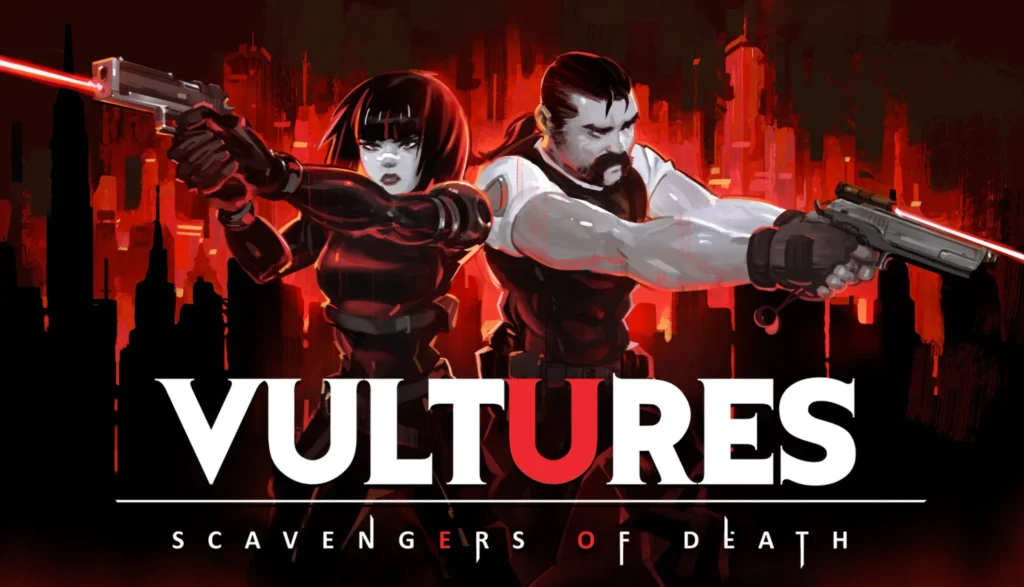
In the same way you would combine a red and green herb in Resident Evil, Giovanni (Agar3s) and Mateo (Carenalga) from Team Vultures are combining tactical turn-based gameplay with survival horror themes. “In fact I came to the realisation that the tactical elements are perfect for a survival horror game.” Before I played the Vultures – Scavengers of Death demo I was worried the turn based elements would overpower the survival horror but that isn’t the case. In fact I came to the realisation that the tactical elements are perfect for a survival horror game. Turn-based games share several similarities with survival horror games in terms of strategic depth and gameplay mechanics. In turn-based games, players must weigh the risks of each move, while in survival horror games players must think about their actions at a more deliberate pace rather than relying on fast reflexes. Survival horror games typically feature real-time combat, the need to choose when to fight, flee, or hide mirrors the tactical combat decisions in turn-based games. I decided to test Vultures against my “golden rules of survival horror” and I was surprised to find it almost perfectly fits my criteria for the essential gameplay elements of a survival horror game. For more information on my golden rules for visit here: www.survivalhorrors.com/survival-horror-golden-rules Golden Rule 1: Scarce Resources There is barely enough ammo to kill all of the zombies in the police station where the demo takes place, I found myself entering rooms with 5 or 6 zombies and I simply did not have enough ammo to kill them all. Just like classic survival horror games I had to back track where I found a shotgun which let me progress through the rooms with large numbers of enemies. Saving in Vultures is also a scarce resource, just like the ink ribbons in Resident Evil to save in Vultures you have a limited number of discs, this requires players to be strategic about when and where they save their progress to avoid losing significant progress. Golden Rule 2: No Control Over How Successful Your Attack Will Be In fixed camera angle games, you aim roughly in the direction of the enemy without any real control or precision aiming. This lack of control is present in Vultures, I found myself with a 70% chance of getting a head shot regularly missing. This lack of control when fighting enemies is what separates survival horror games from action games that do have precision aiming. Golden Rule 3: Unexpected Attack In classic fixed camera survival horror games there would often be enemies just outside of the cameras view which made it unsettling to turn a corner. In the footage below you can see this same scenario plays out in Vultures, you don’t know what is a few movement squares in front of you until after you commit to moving. In the footage I try and sneak past a zombie but a second zombie is revealed around a hidden corner triggering the combat. Running in the game wouldn’t be advised and the sneaking feature doesn’t guarantee safety either. Golden Rule 4: Puzzle Solving The demo features a few code base puzzles which require you to read notes you find in the police station and then back track to a lock. Puzzles in the final game will be expanded to more than just code based puzzles but they are still being developed. Golden Rule 5: Having to Evade Enemies I found myself underequipped to fight the enemies in a room or the room had more zombies than I first thought, when this happened it was best to just run to the nearest door and evade the enemies. There is also a stealth movement mode (Sneak) which is slower but a much safer way to move around the police station. I found this worked great when there is 1 zombie in the room but you can’t easily sneak between multiple zombies. Golden Rule 6: Playing as a Vulnerable Character You play as a bad ass from the Vultures organisation so you aren’t exactly vulnerable however if enough zombies surround you it is hard to live. In the final version of Vultures you will have the choice of two characters, Leopoldo or Amber. This is a nice tribute to Alone in the Dark and Resident Evil that also give you a choice of a male or female character. Golden Rule 7: Maze-like Environments The police station in Vultures is very similar to the labyrinthine Resident Evil 2 police station it was inspired by. Even the demo has a nice variety of locations to explore within the police station including a Garden, Press Room, Offices, Firing Range etc. I am really looking forward to exploring and unlock new paths in the police station further when the final game is released. Check out some gameplay from the official Twitter page. Are you excited about Vultures – Scavengers of Death? Wishlist it on Steam now and be the first to know when it’s available! www.store.steampowered.com/Vultures__Scavengers_of_Death
Clock Tower Remake – True Survival Horror

Get ready to revisit one of the most iconic horror games of all time as Clock Tower gets a chilling remake. Never before release outside of Japan, this indie gem, developed by a team of dedicated horror enthusiasts, promises to revive the terror of the original while introducing new twists and turns to keep players on the edge of their seats. For those unfamiliar, Clock Tower follows the story of Jennifer Simpson, a young woman who finds herself trapped in a sinister mansion plagued by a relentless stalker known as Scissorman. As players guide Jennifer through the haunted halls of the mansion, they must solve puzzles, evade the Scissorman’s deadly grasp, and uncover the dark secrets hidden within. “It is true survival horror, you can only survive” Mariel CartwrightClock Tower Port+ Creative Lead Just like the original game Clock Tower Port+ will be a true survival horror game explains Mariel Cartwright “We have a ton of game where you’re fighting monsters and you’re shooting them with guns and that can still be scary but clock tower is distinct in that you really don’t have any of those tools… It is true survival horror, you can only survive.” Whether you’re a fan of the original or new to the world of Clock Tower, this remake is a must have for survival horror fans. Keep an eye out for more updates on this eagerly anticipated indie title as we await its release date. If you would like a physical version of the game Limited Run Games is opening up pre orders from May 31 to June 30 for Switch, PlayStation, Xbox and PC.

